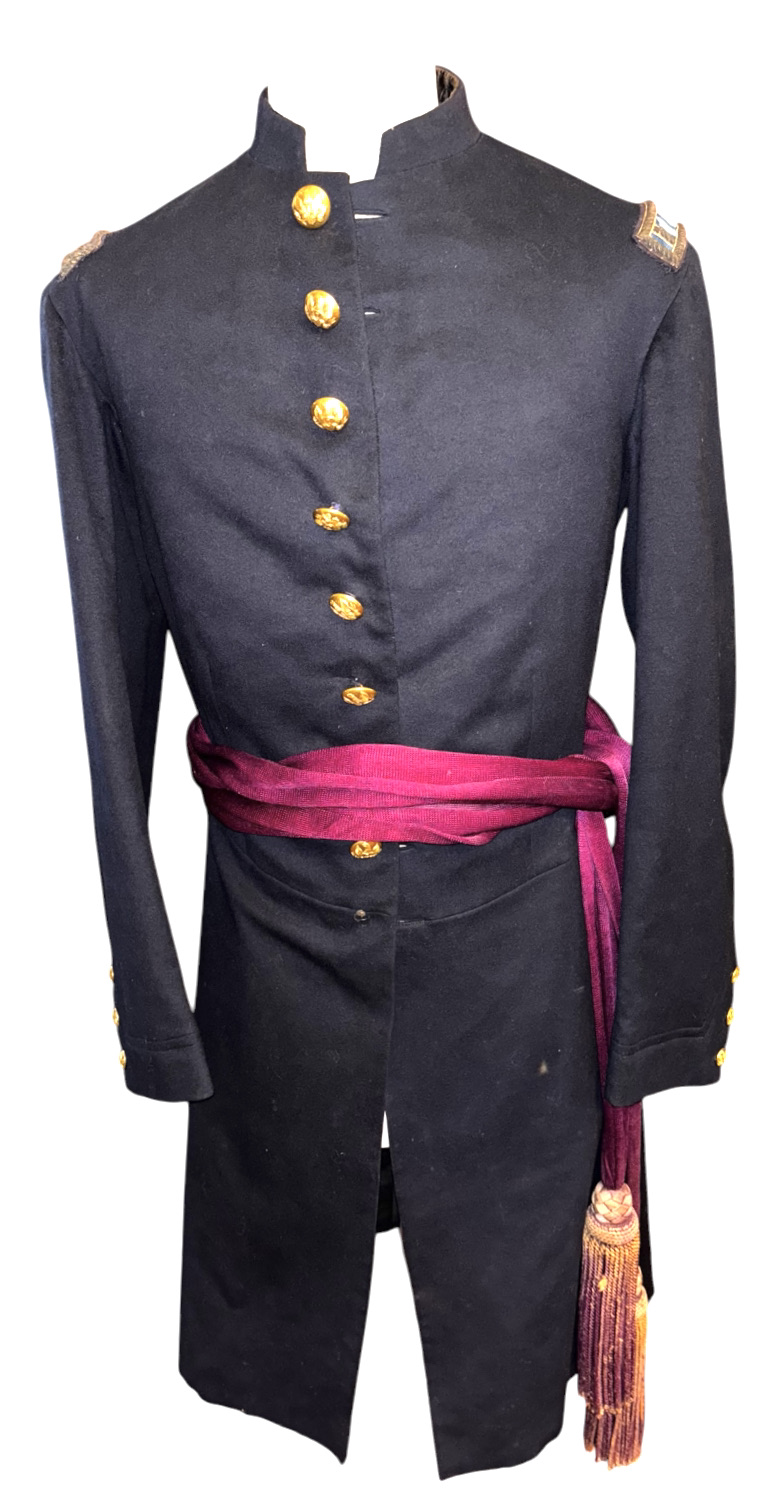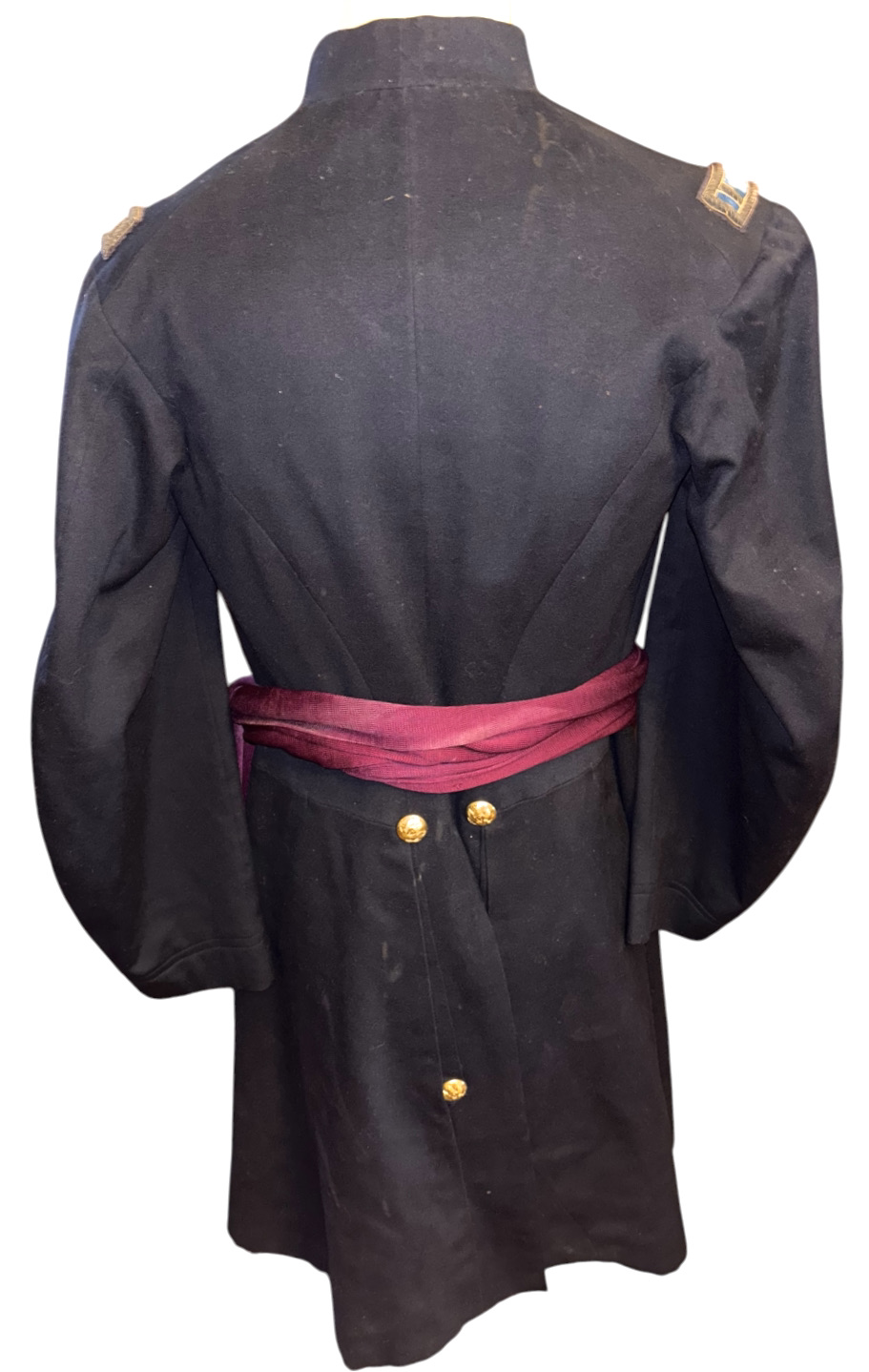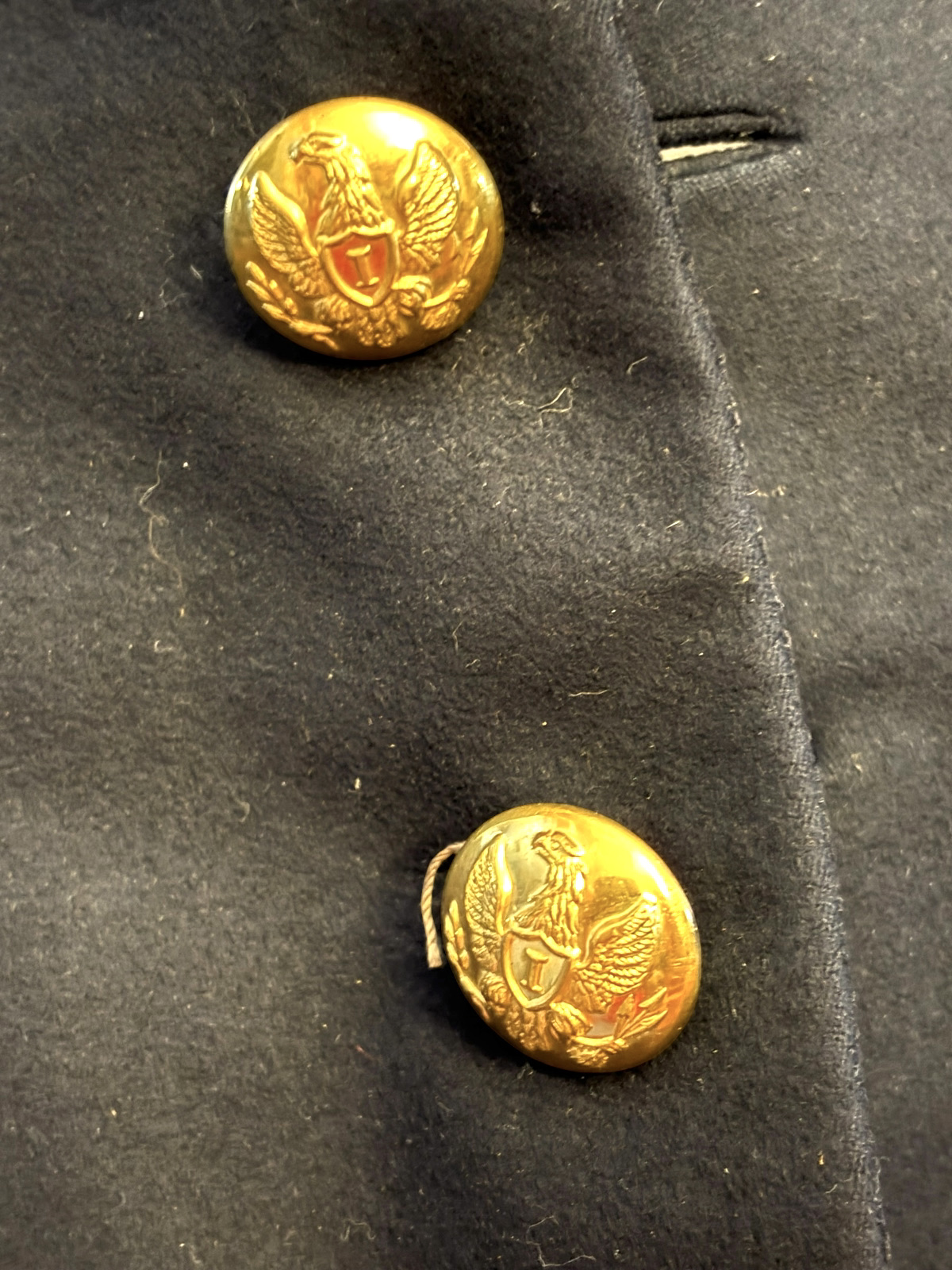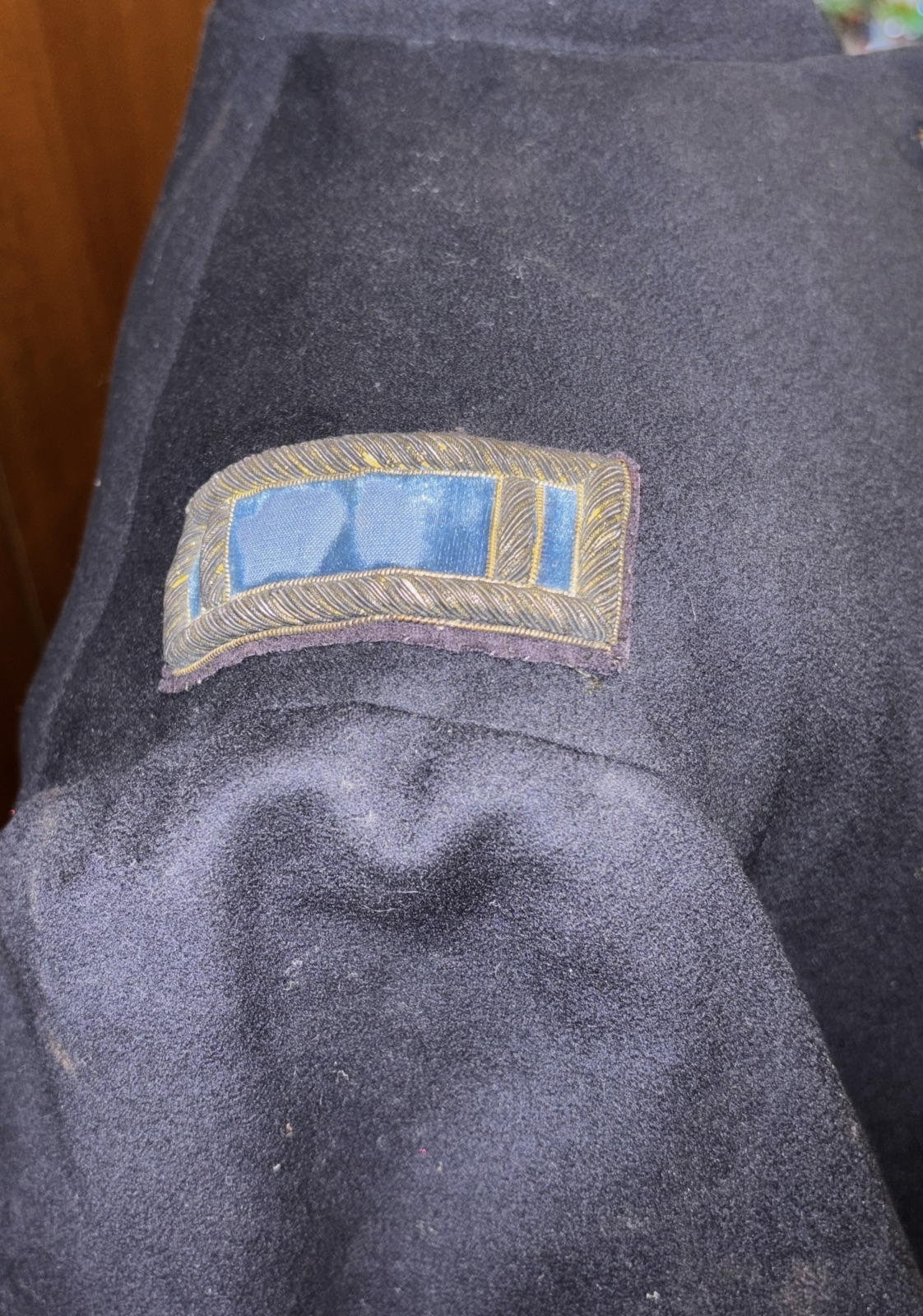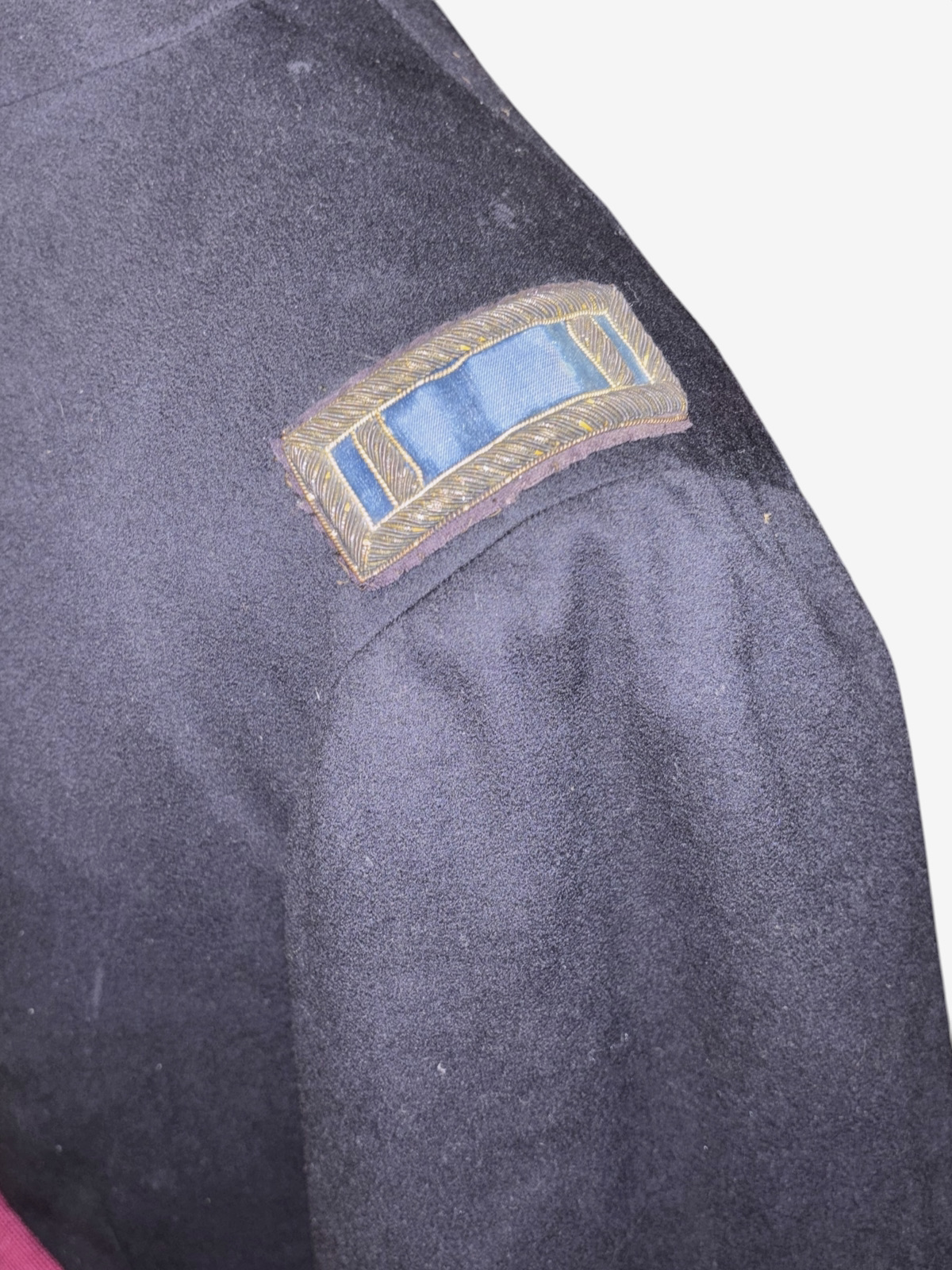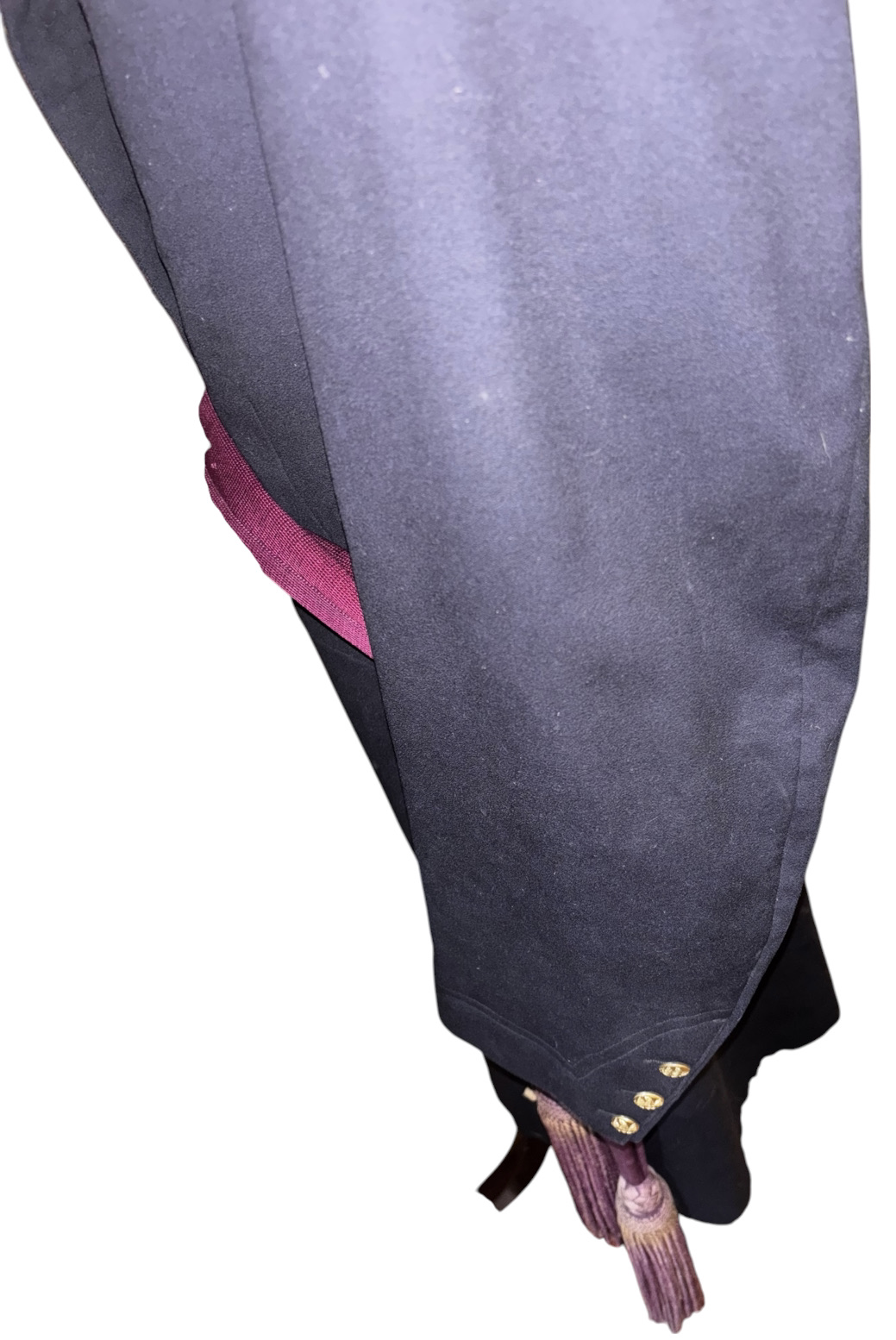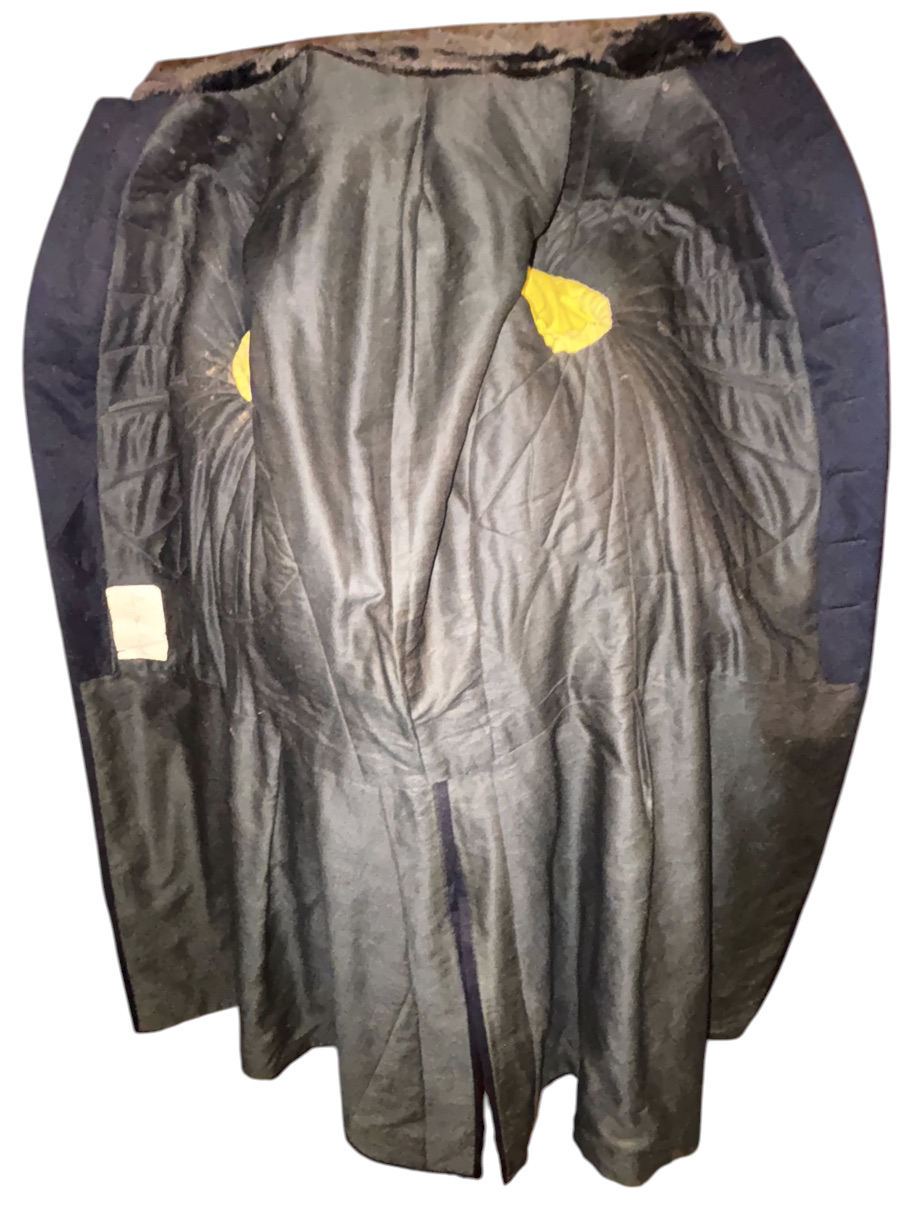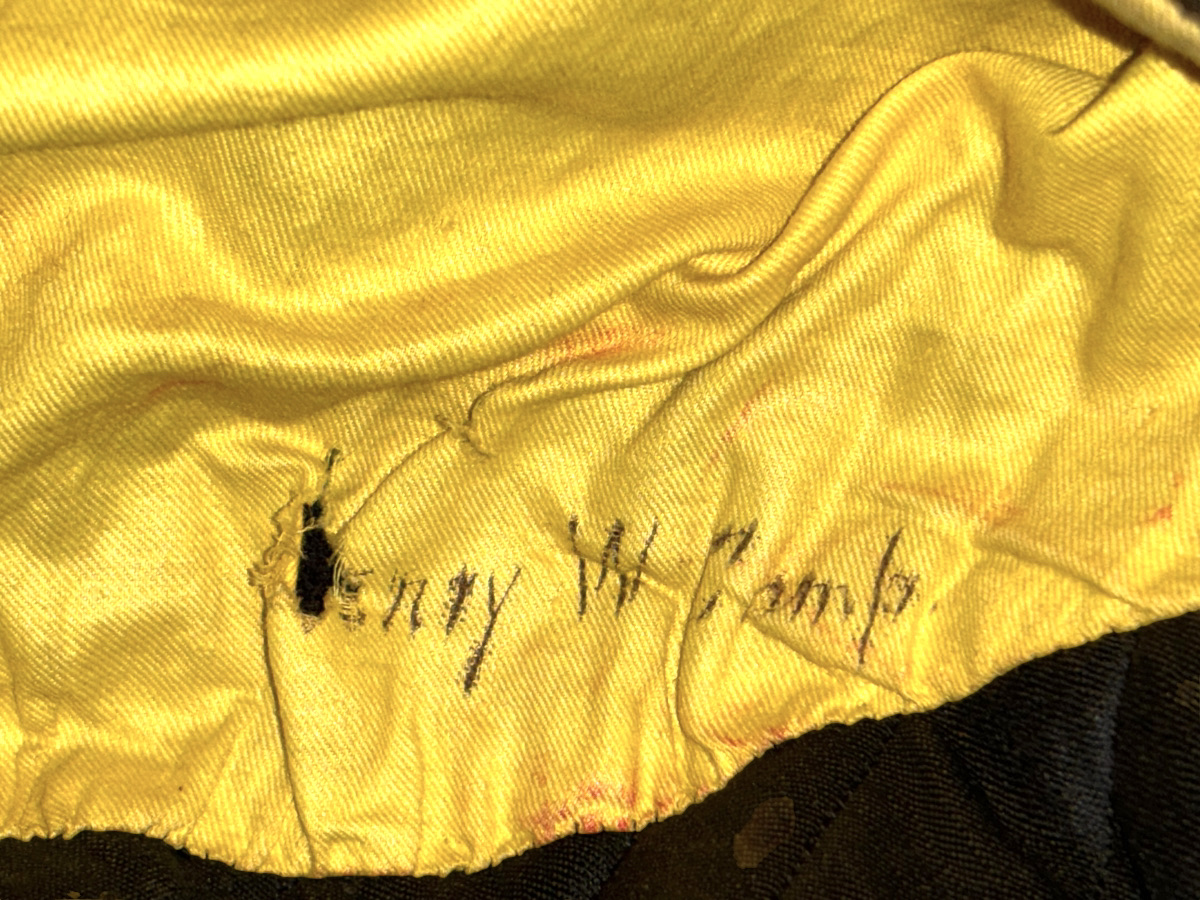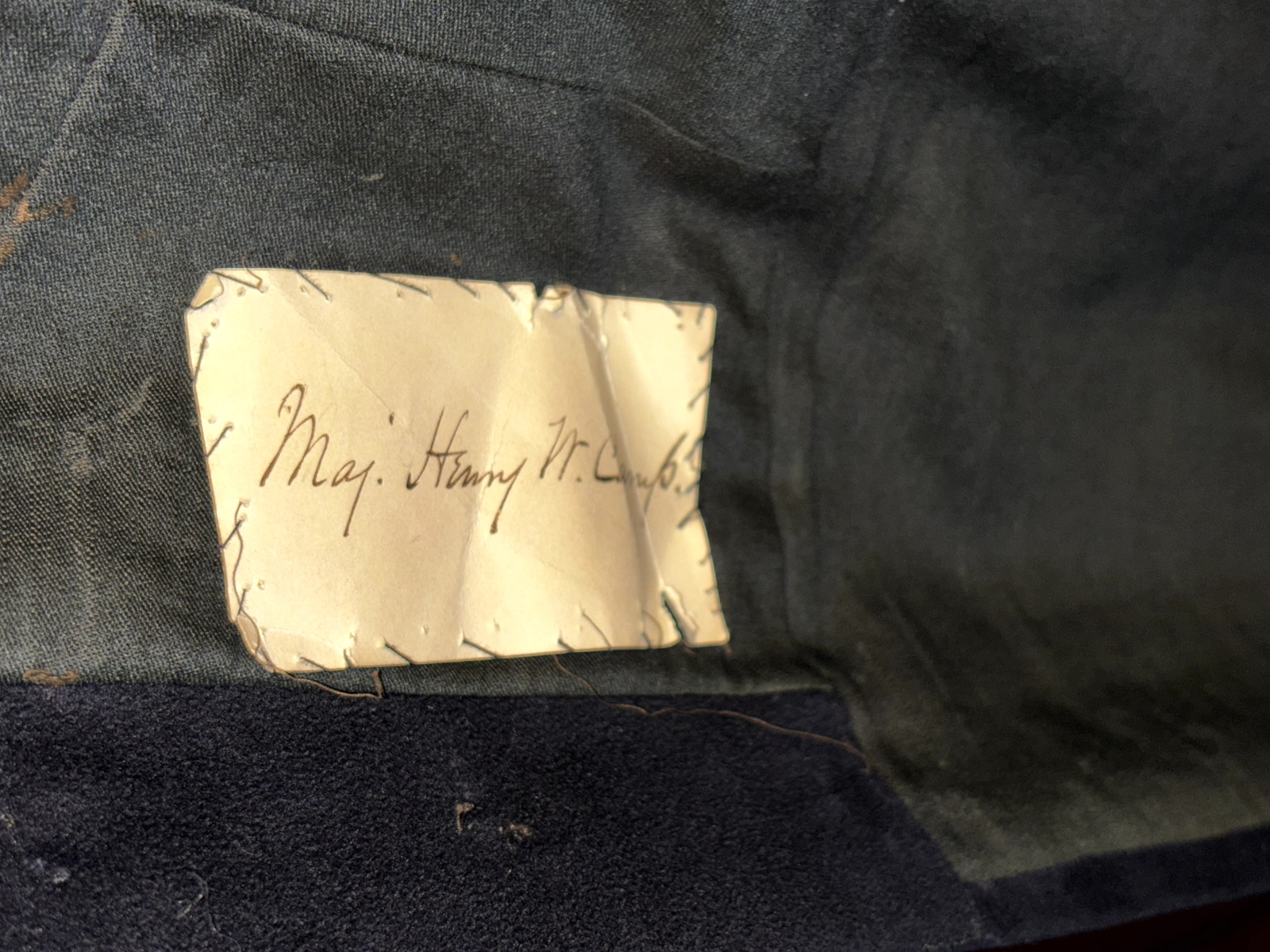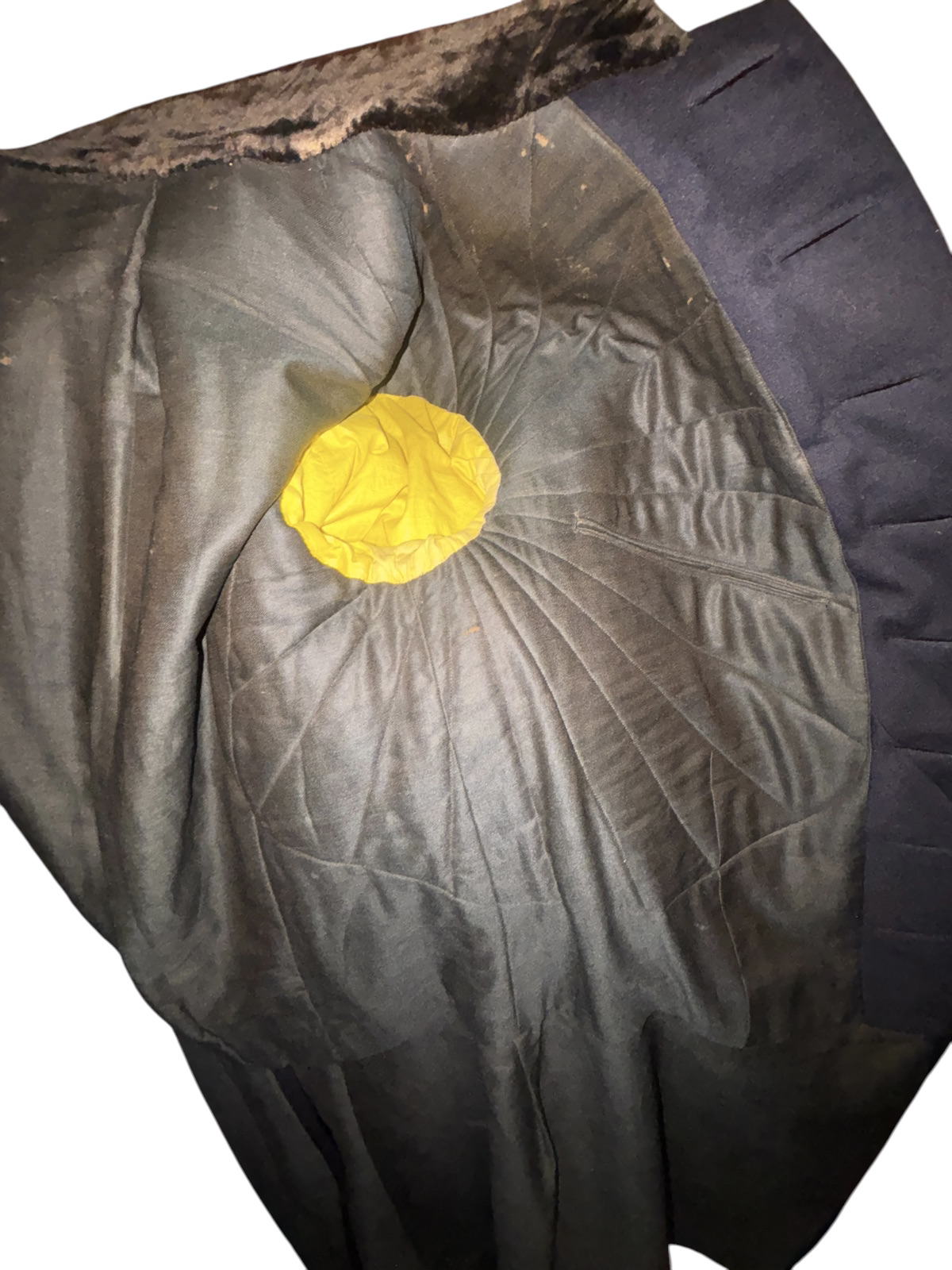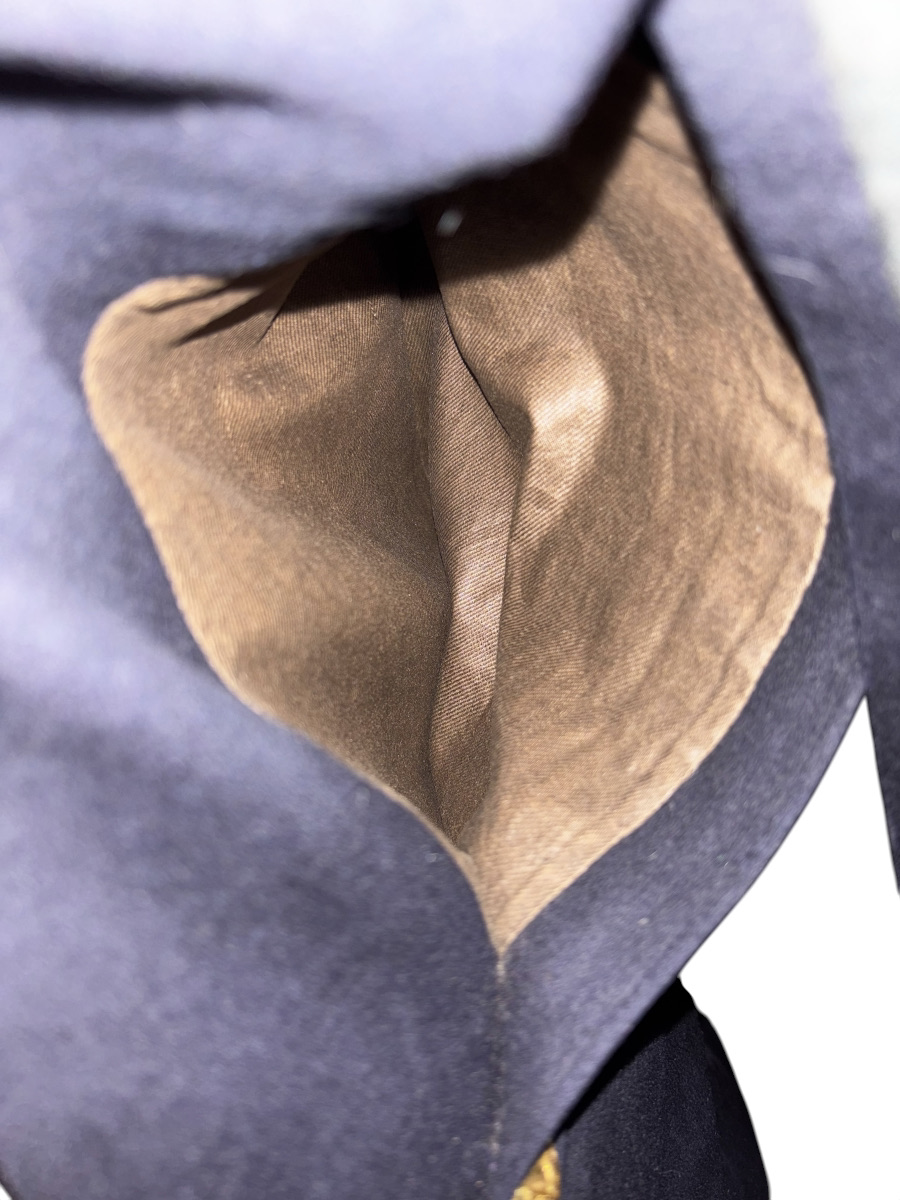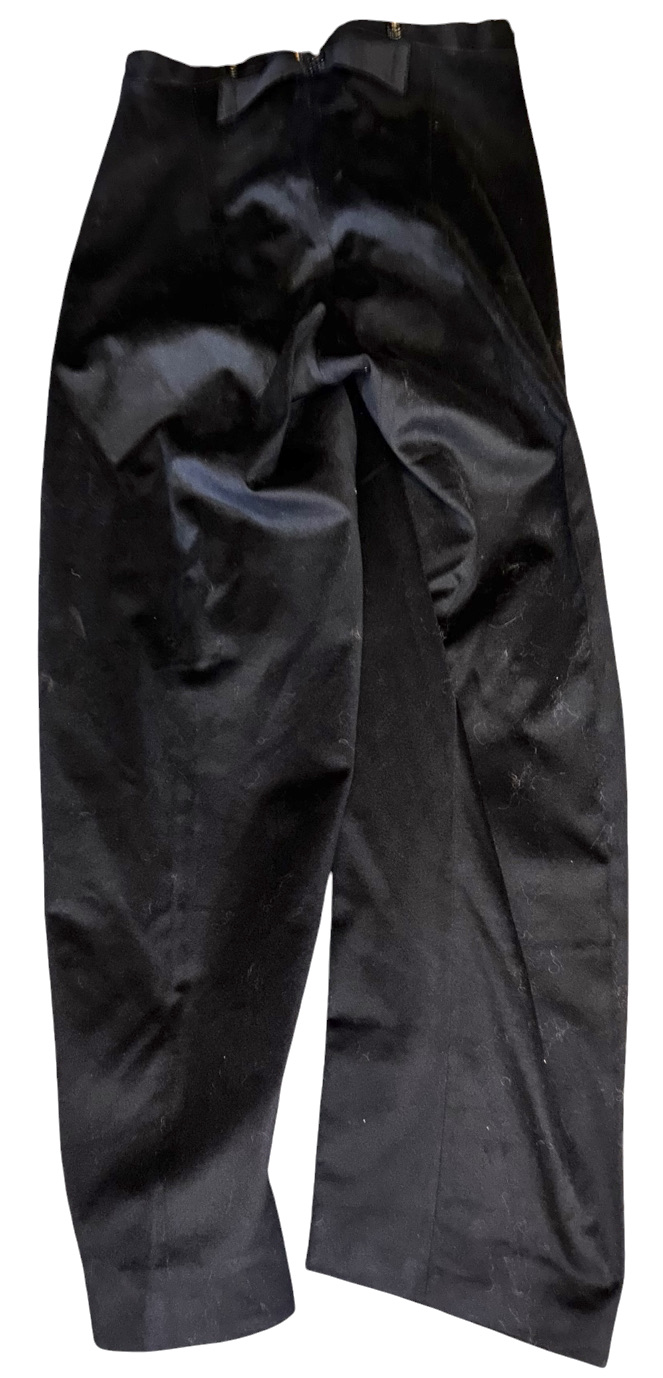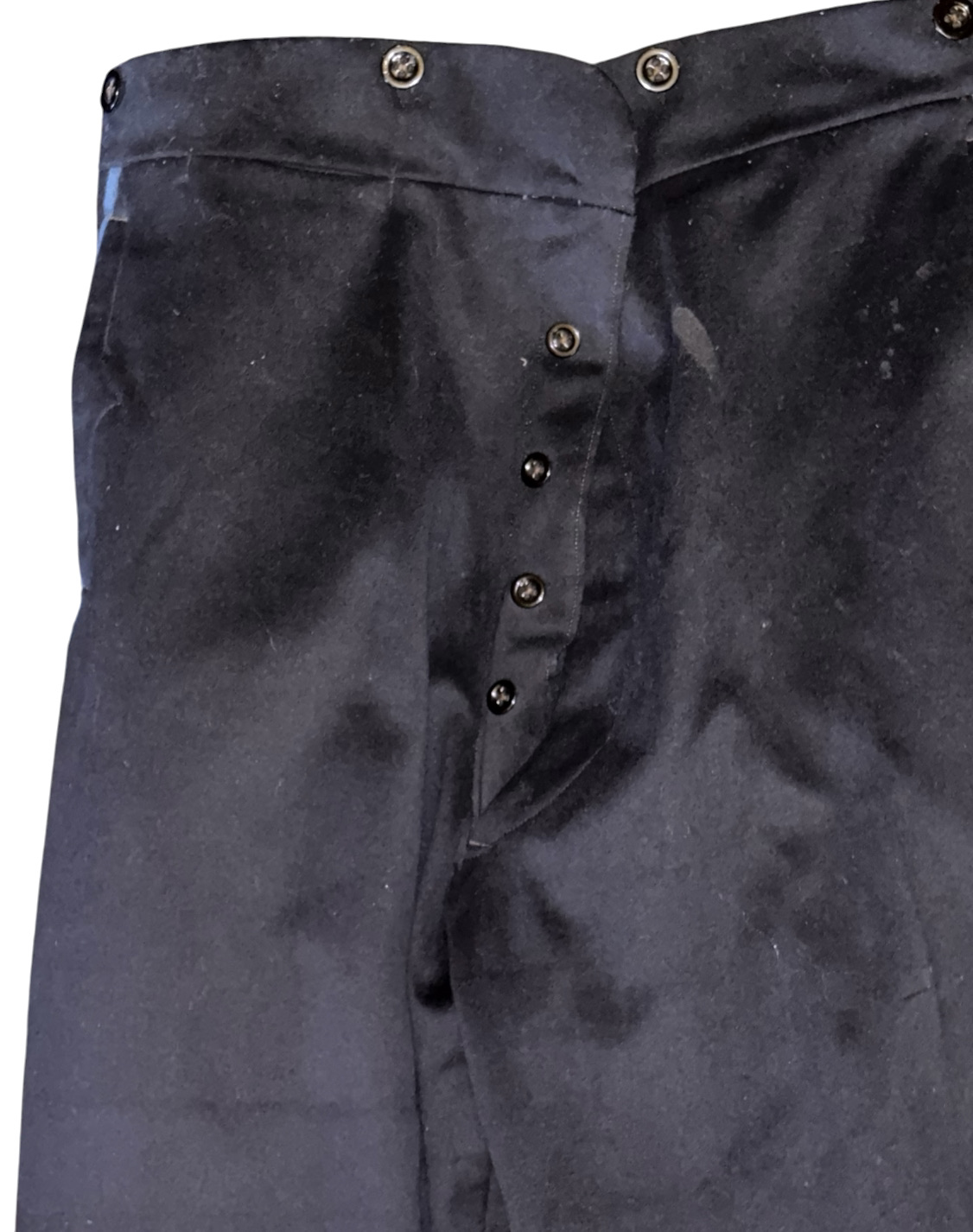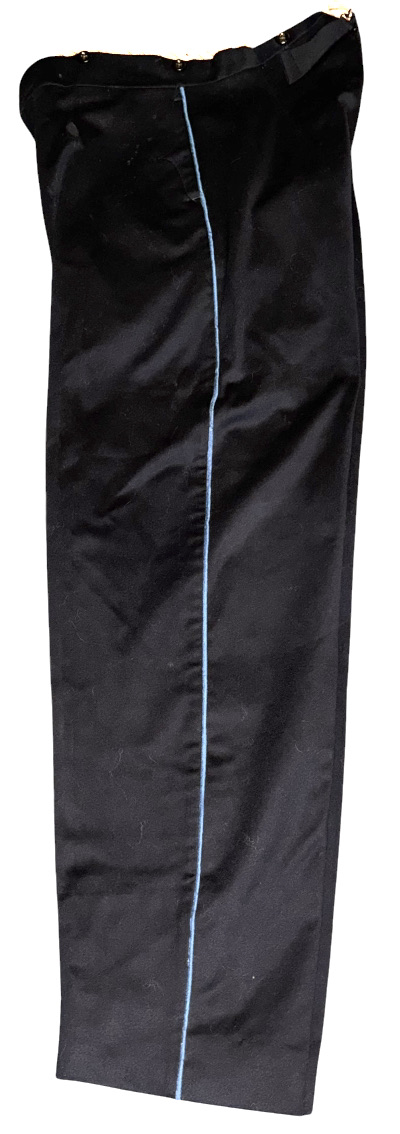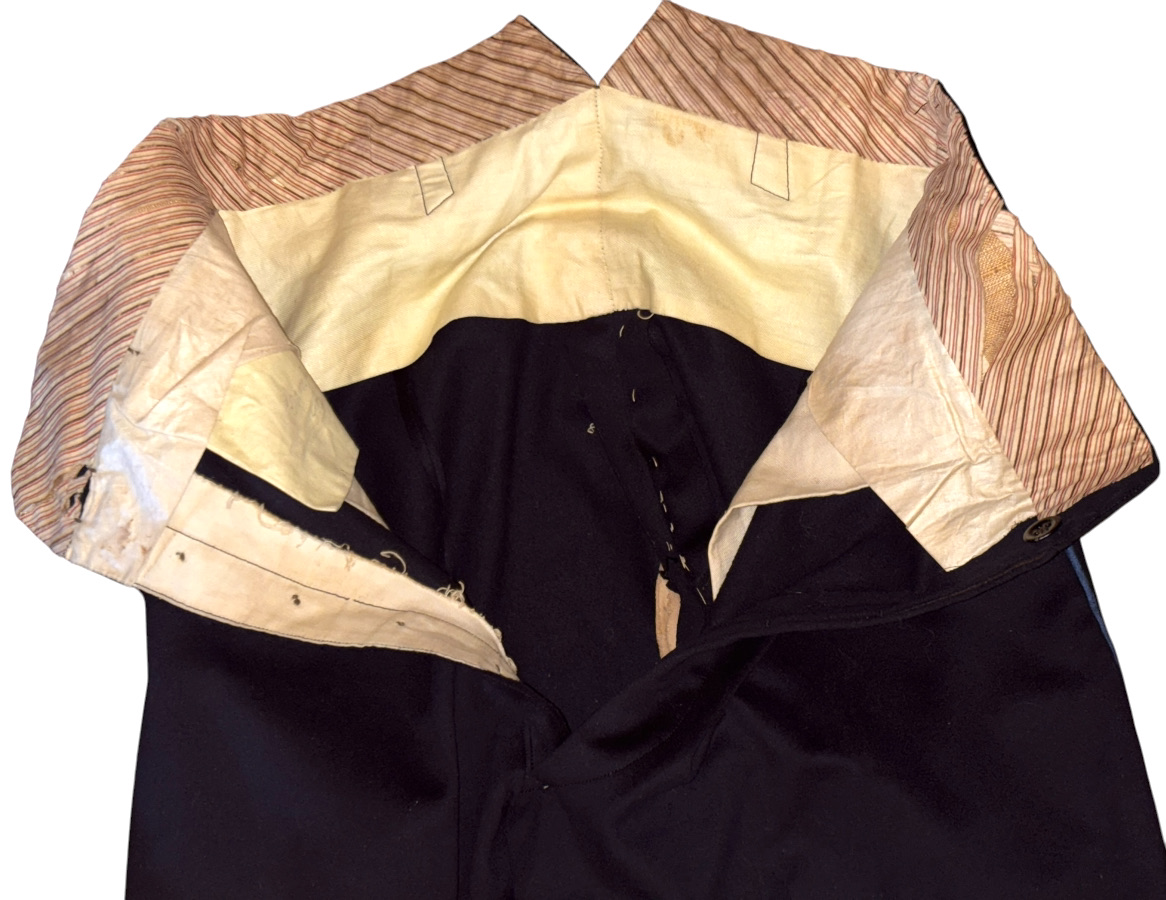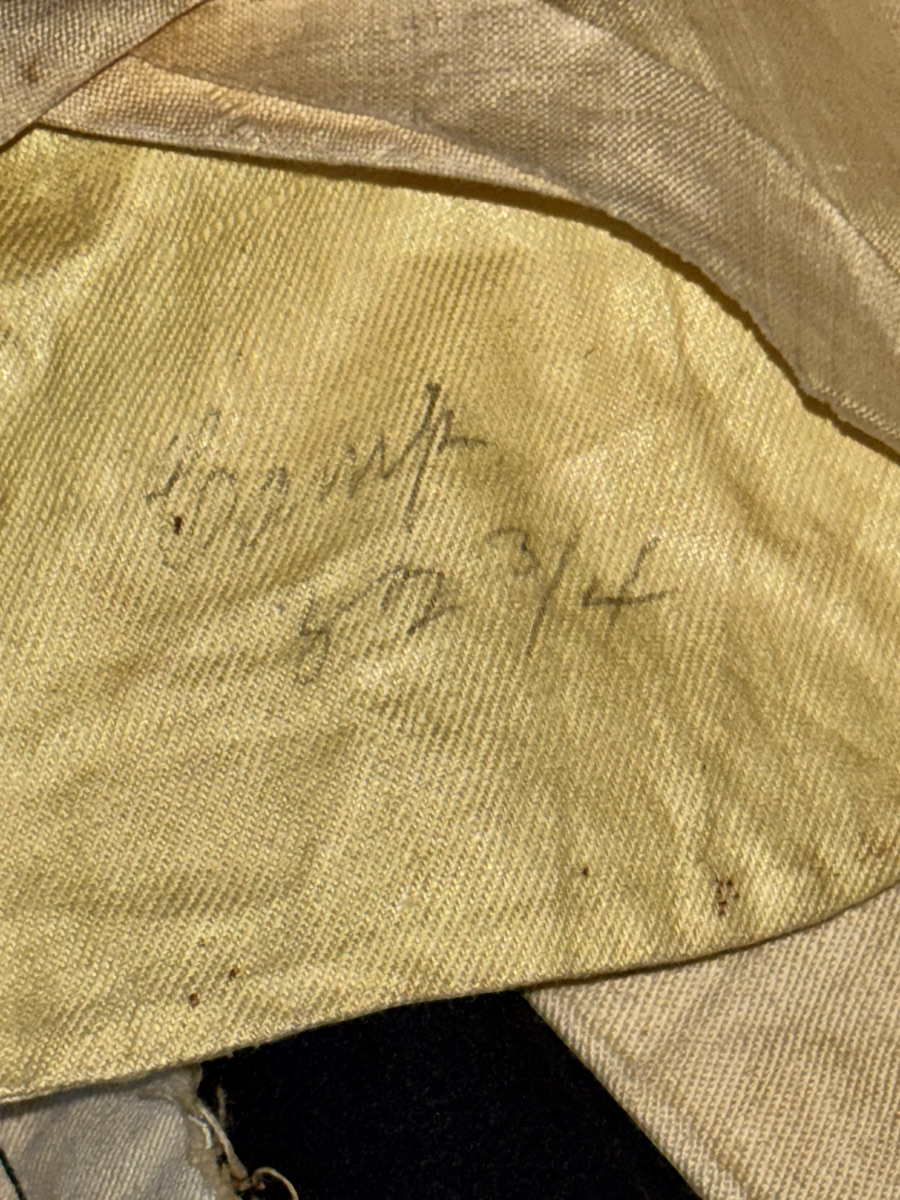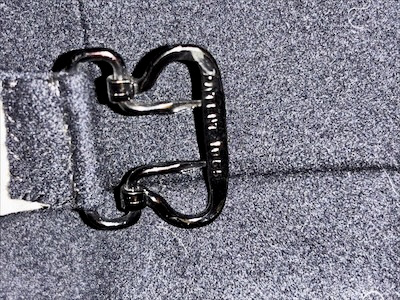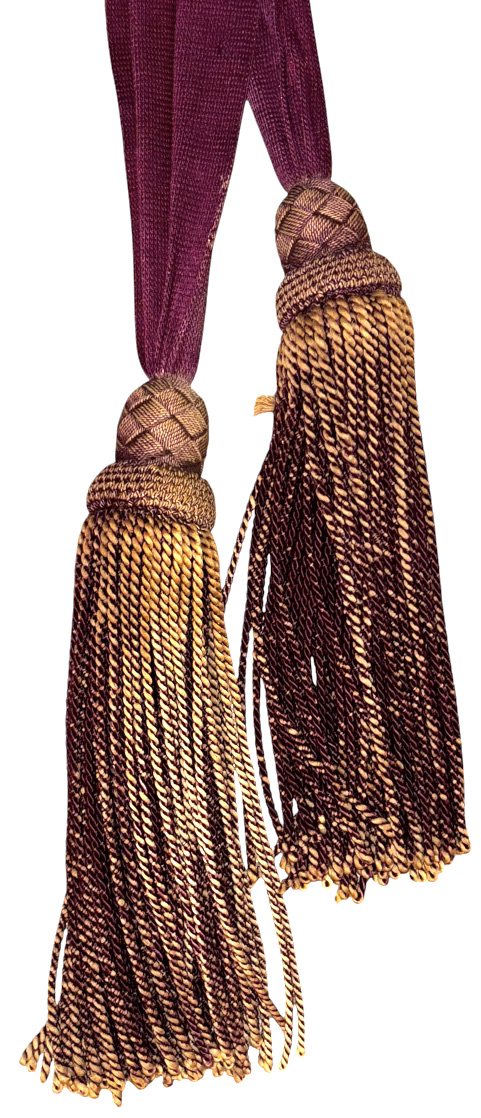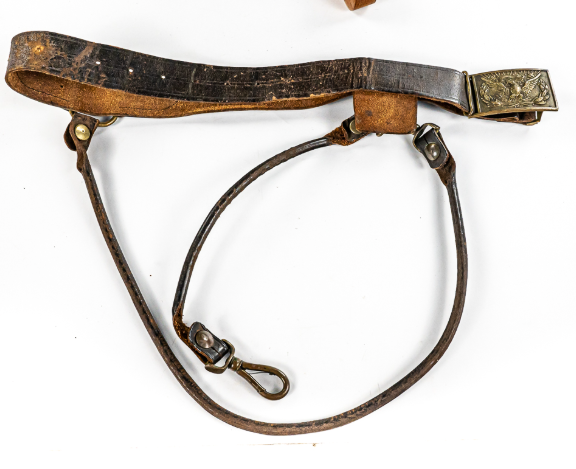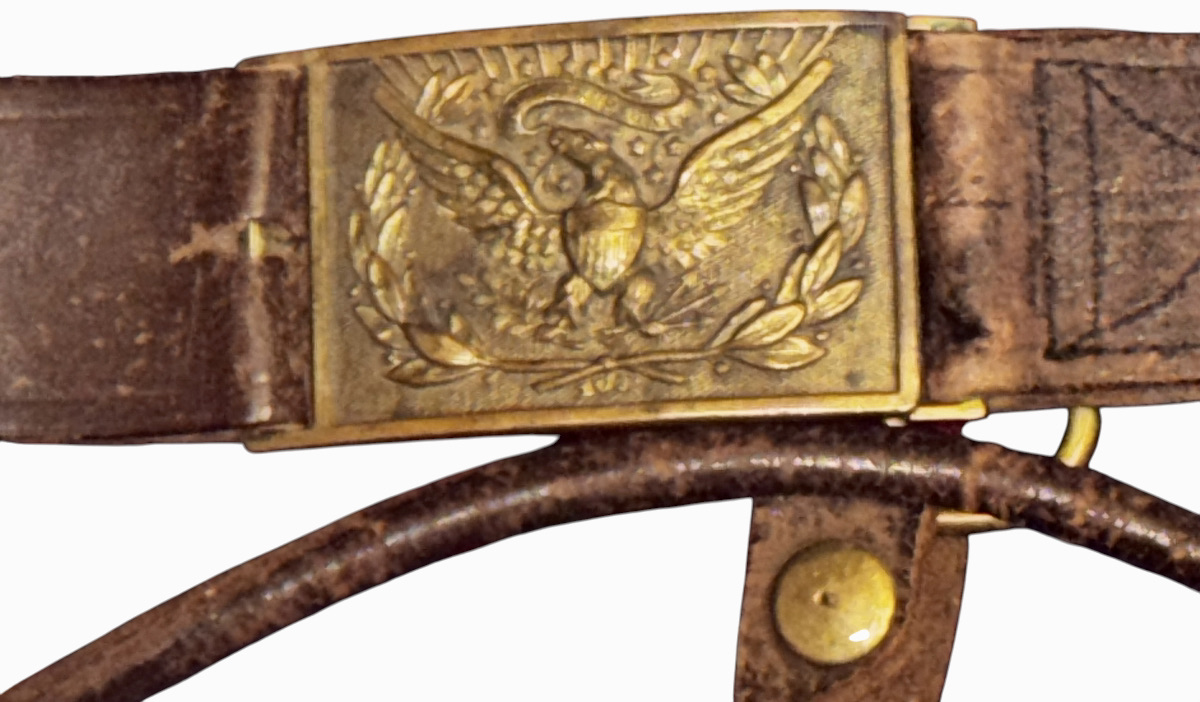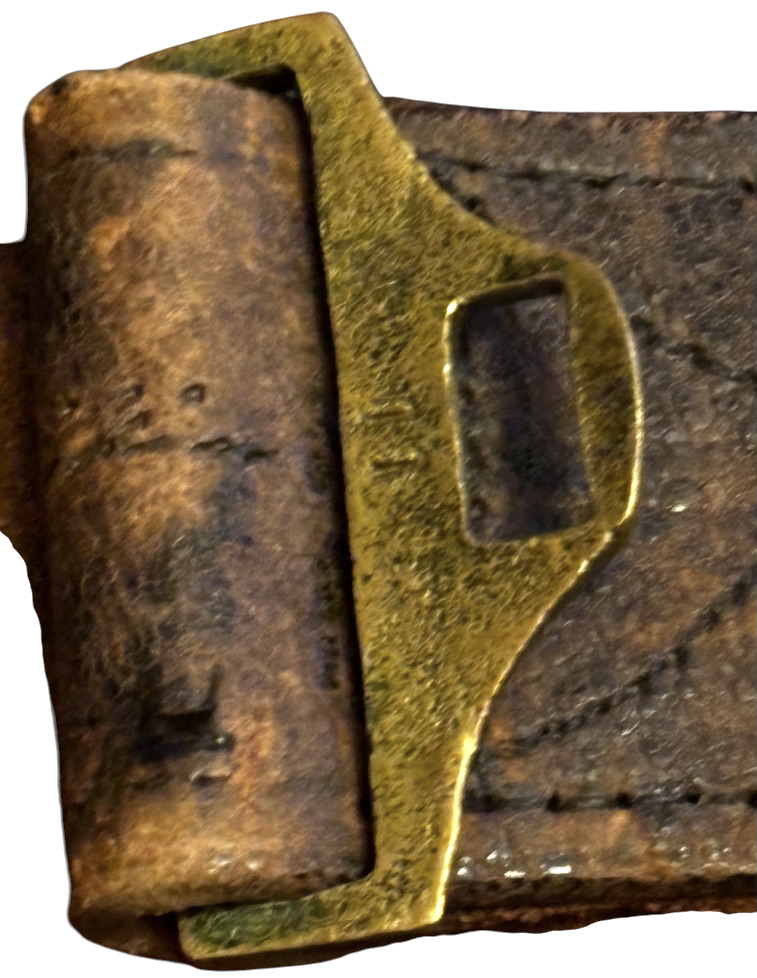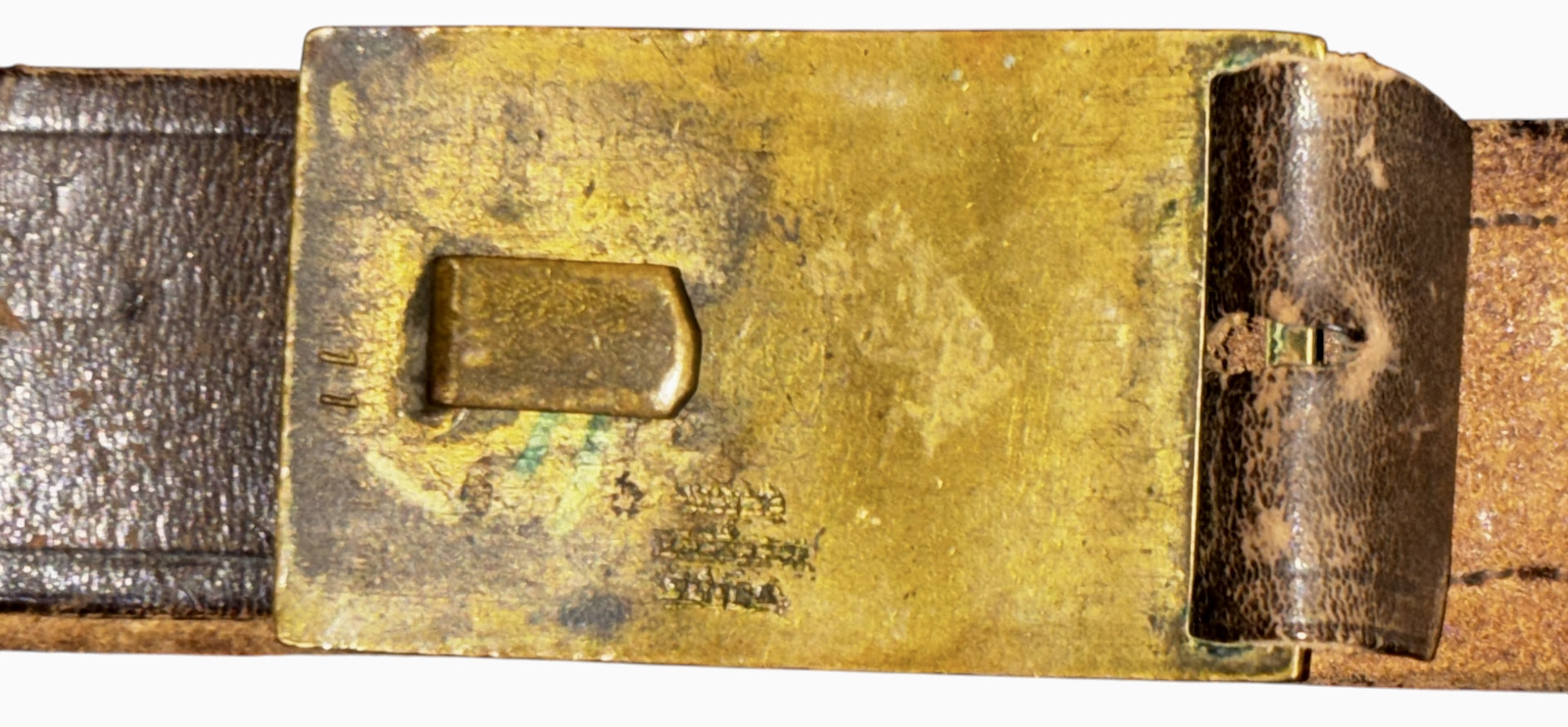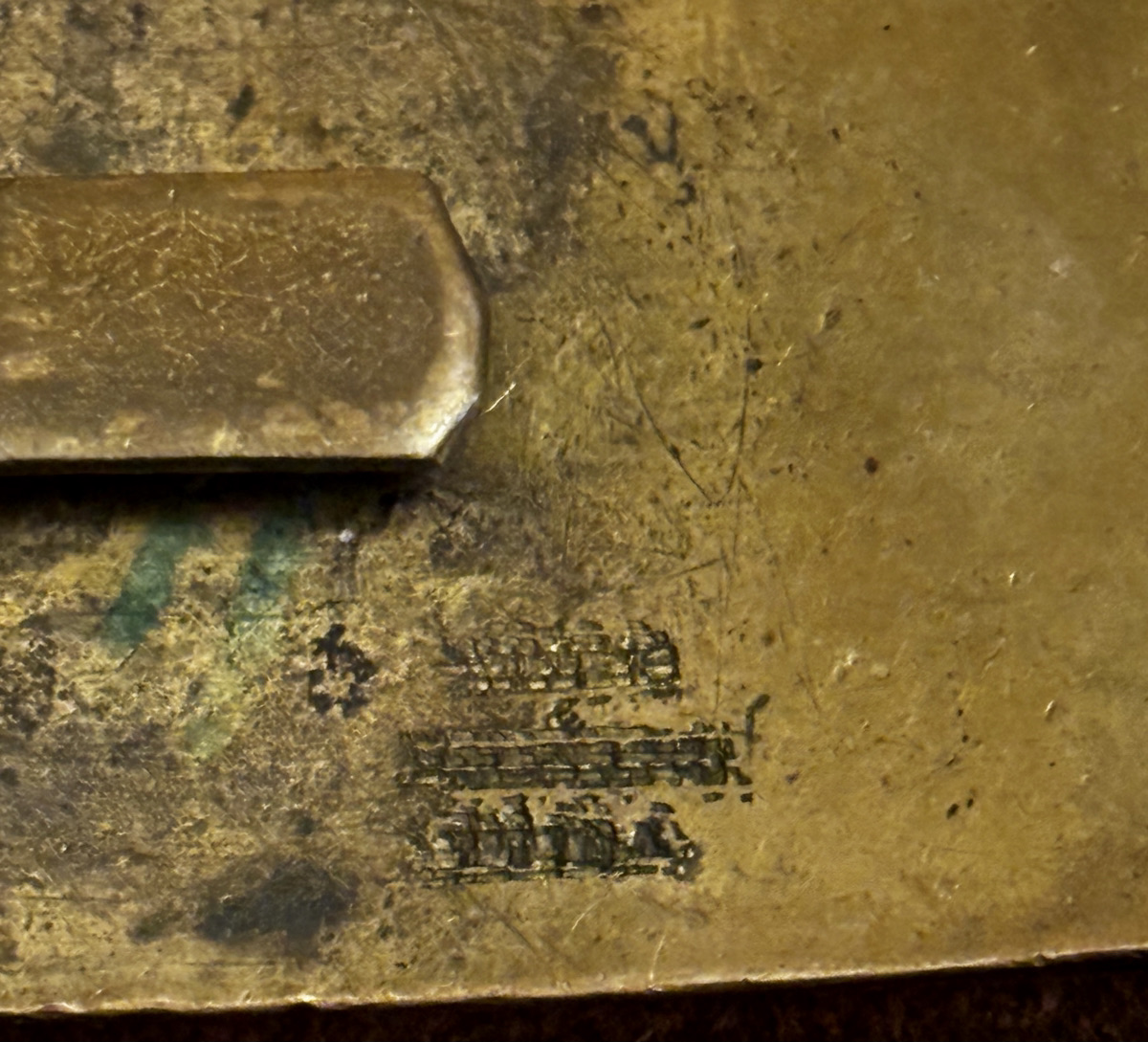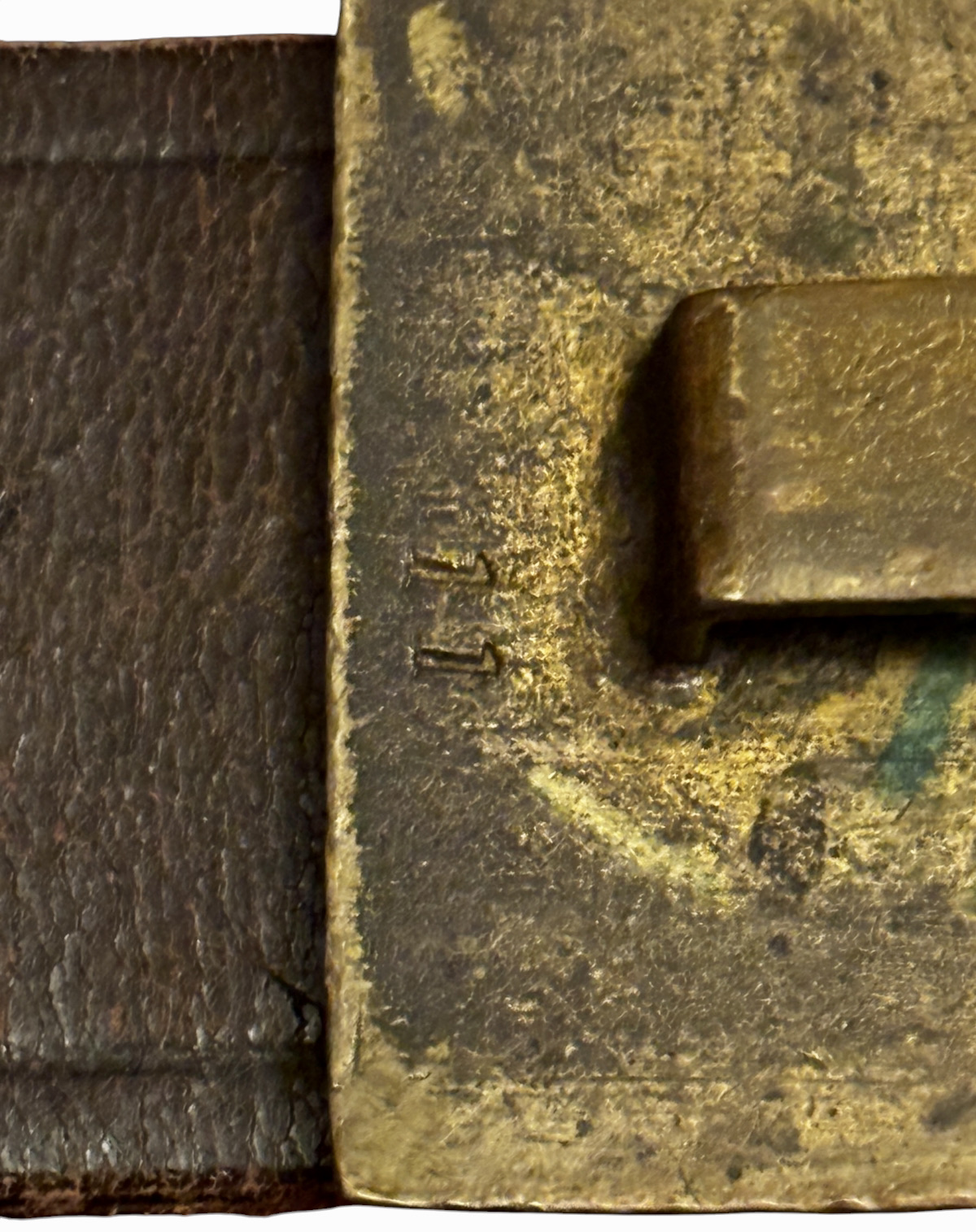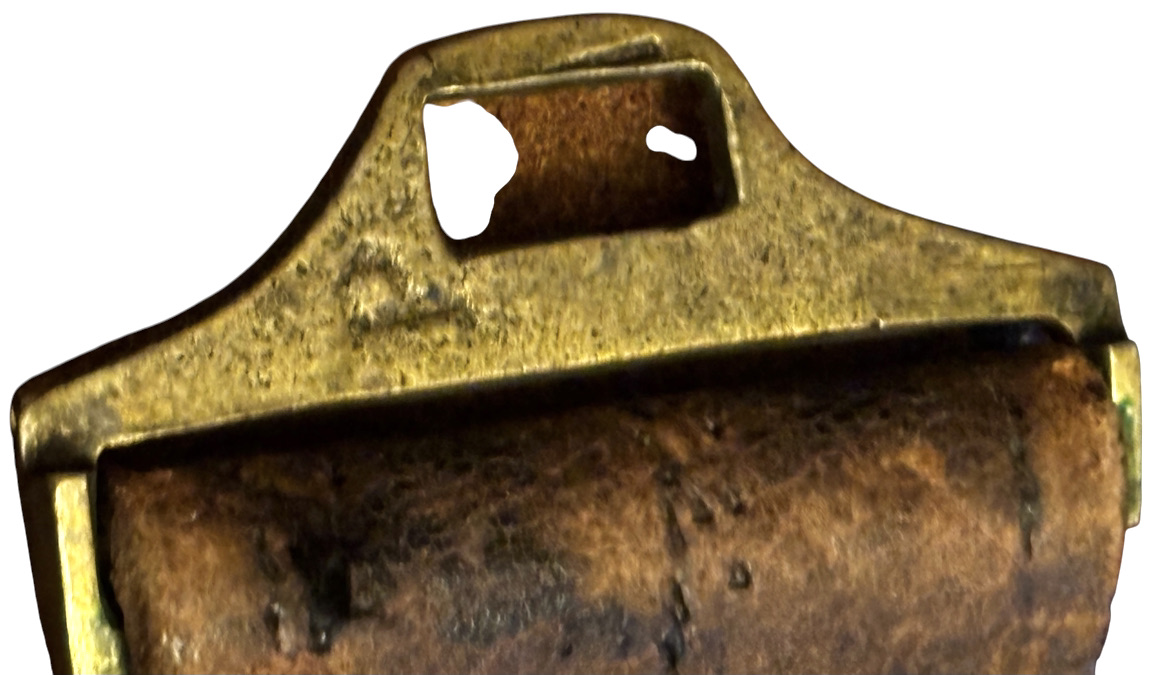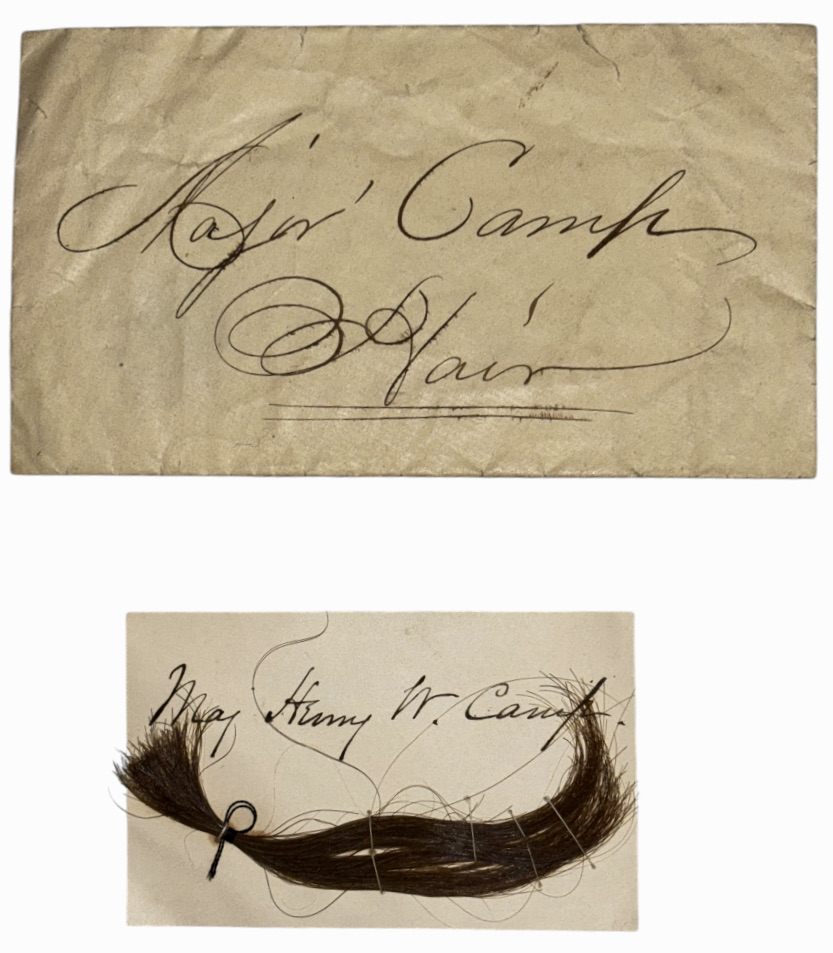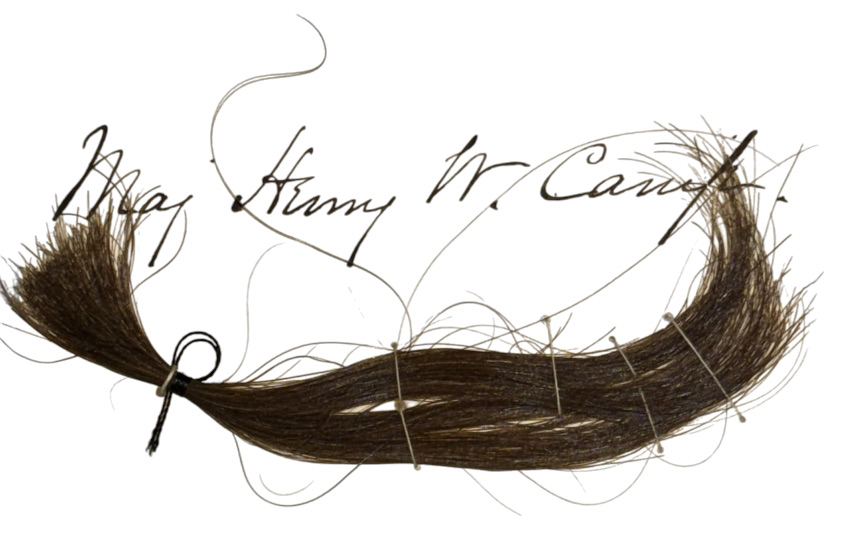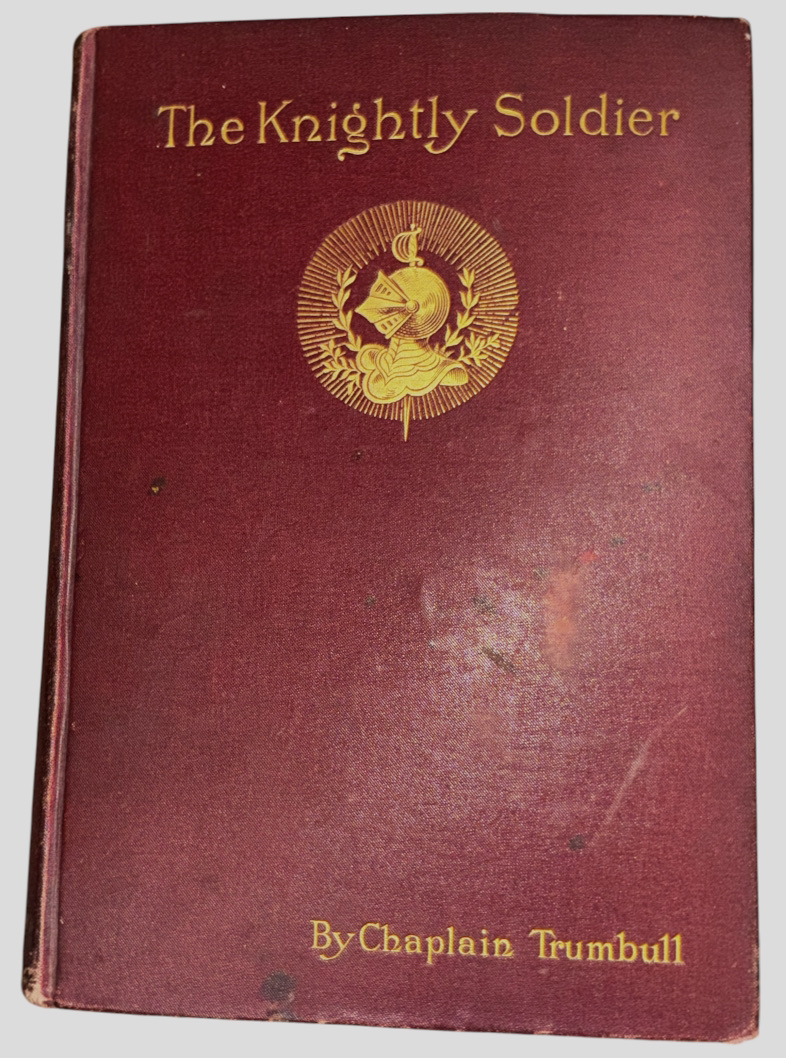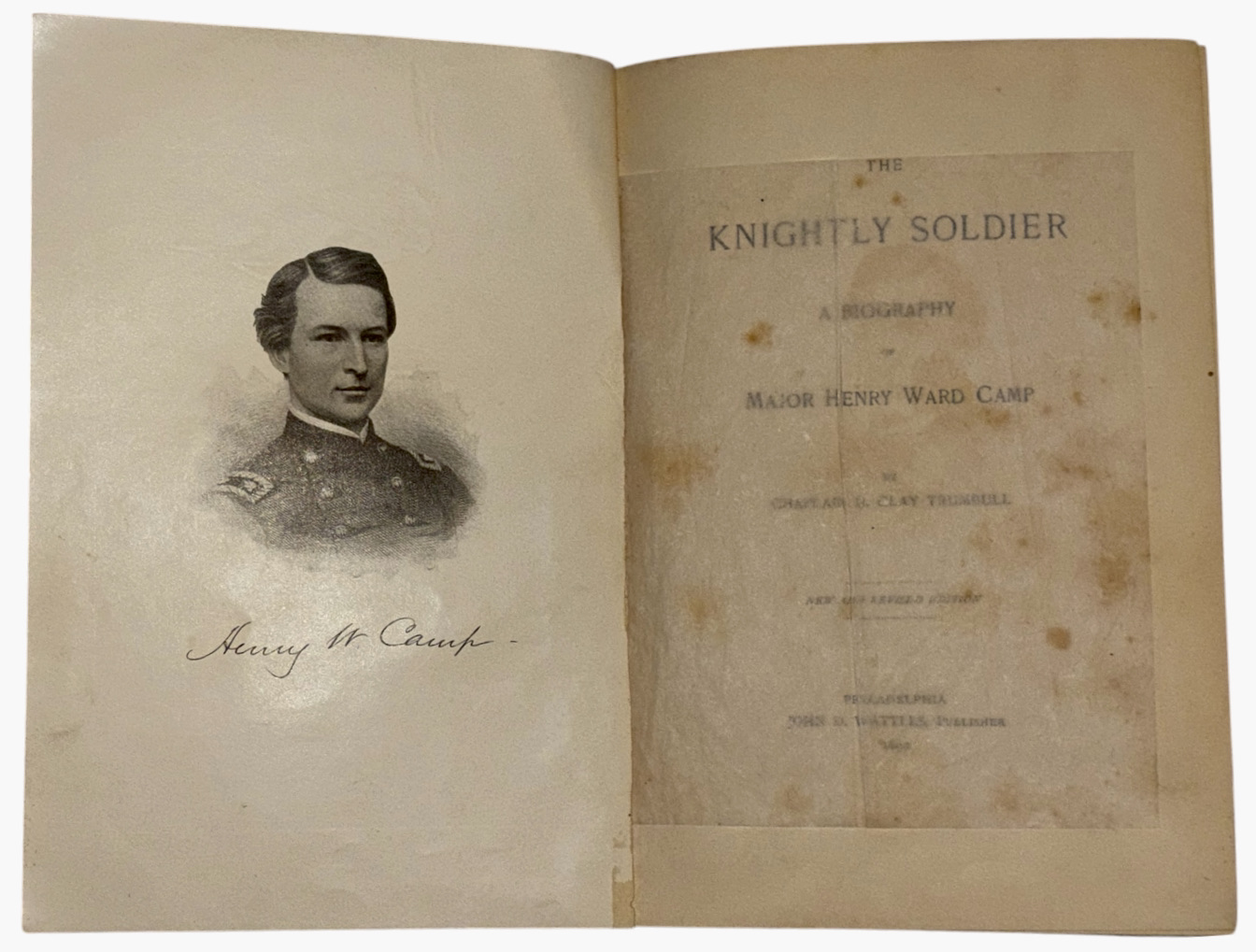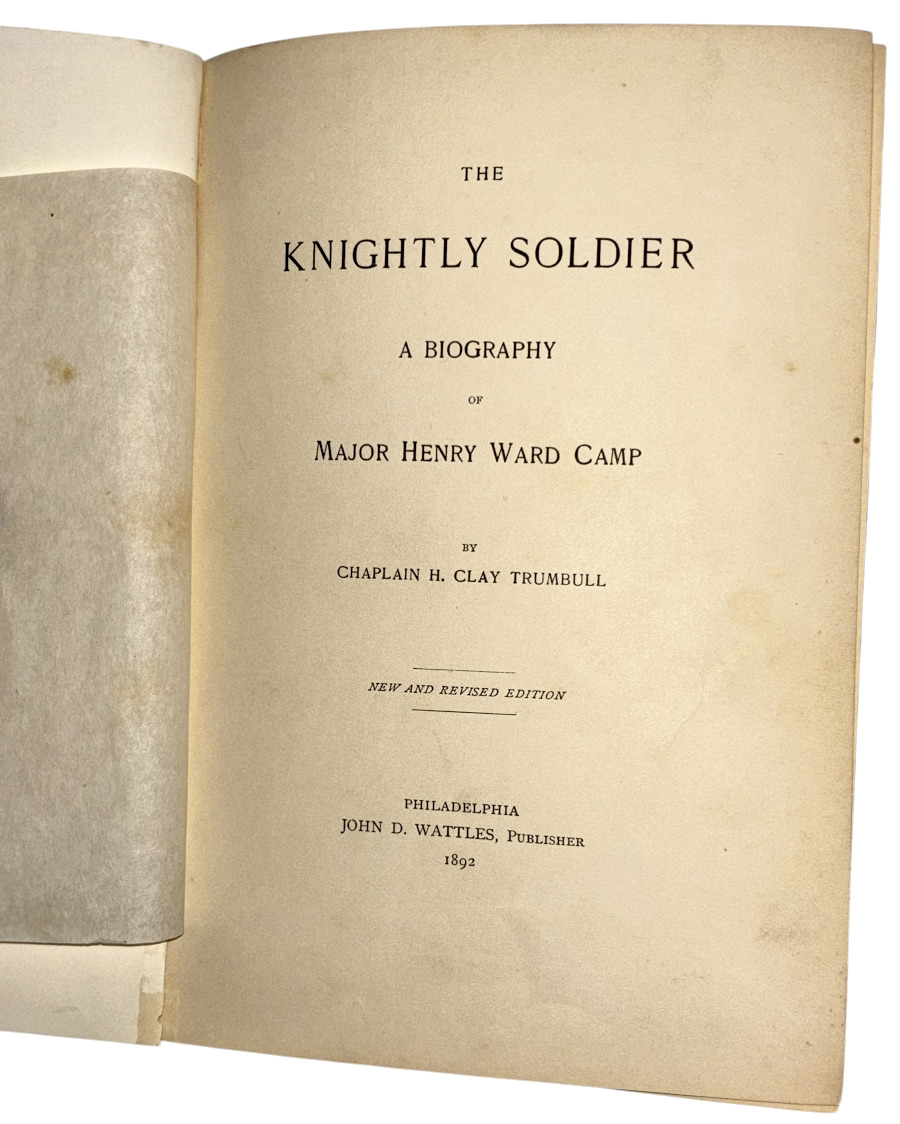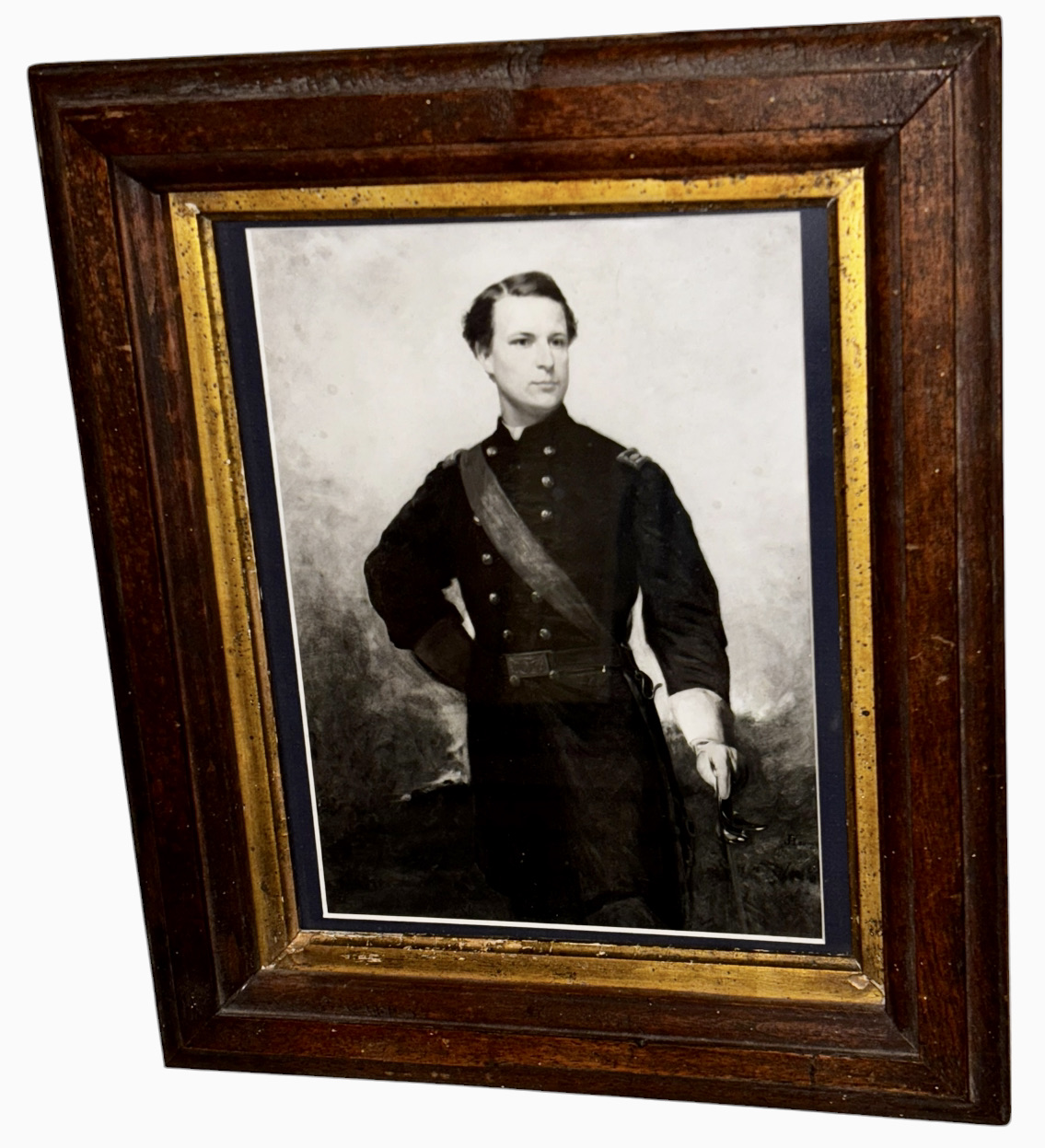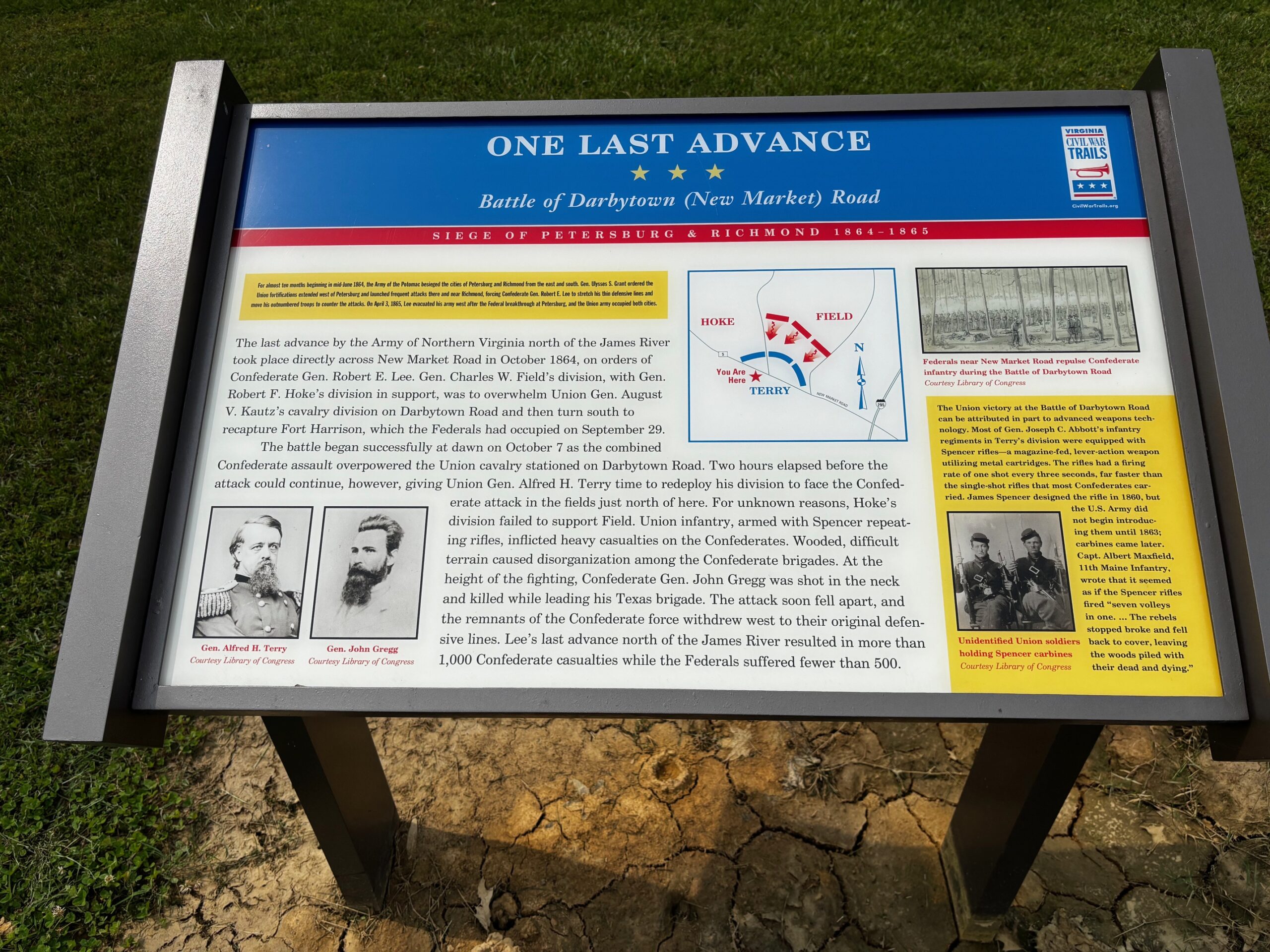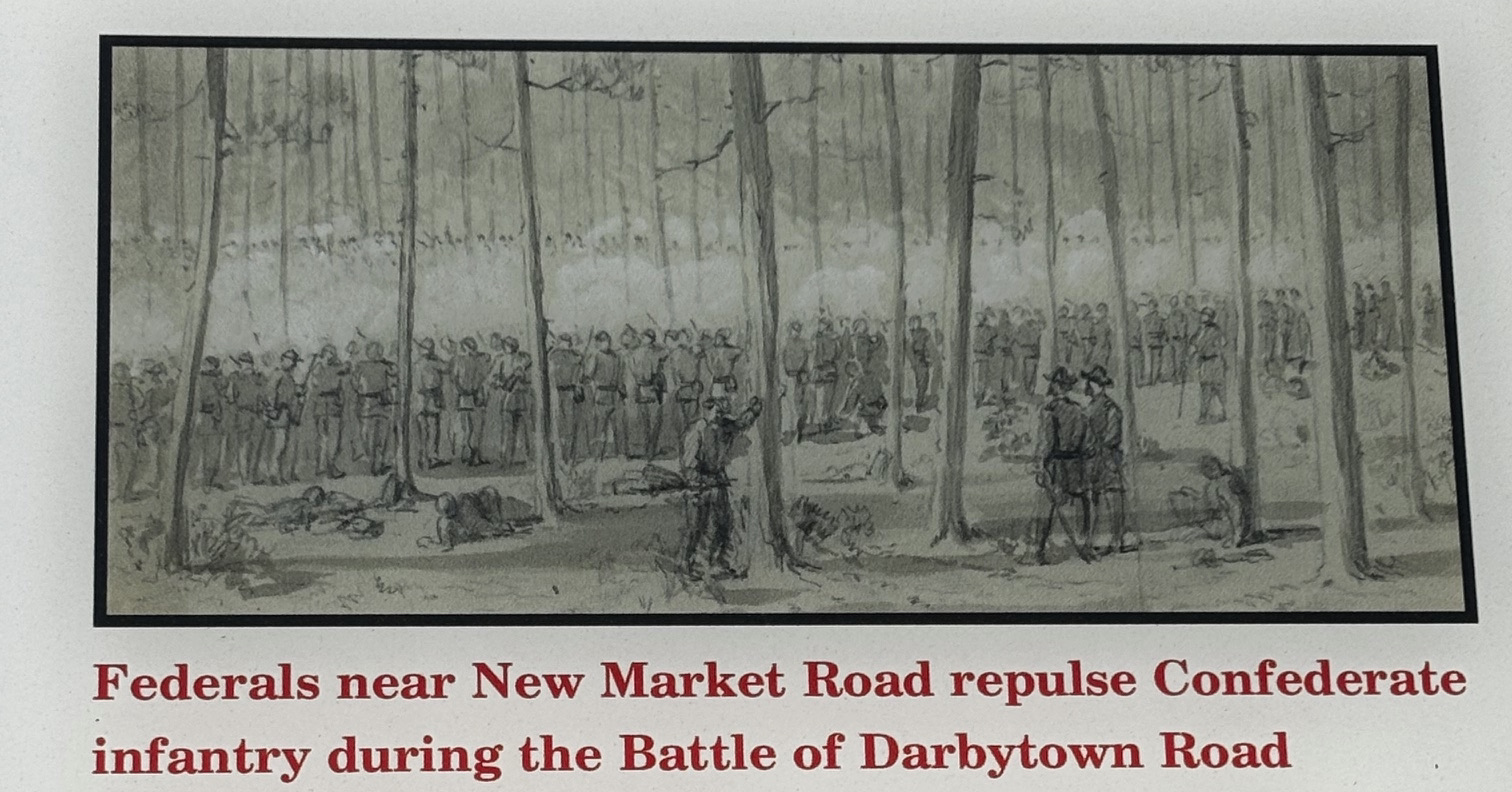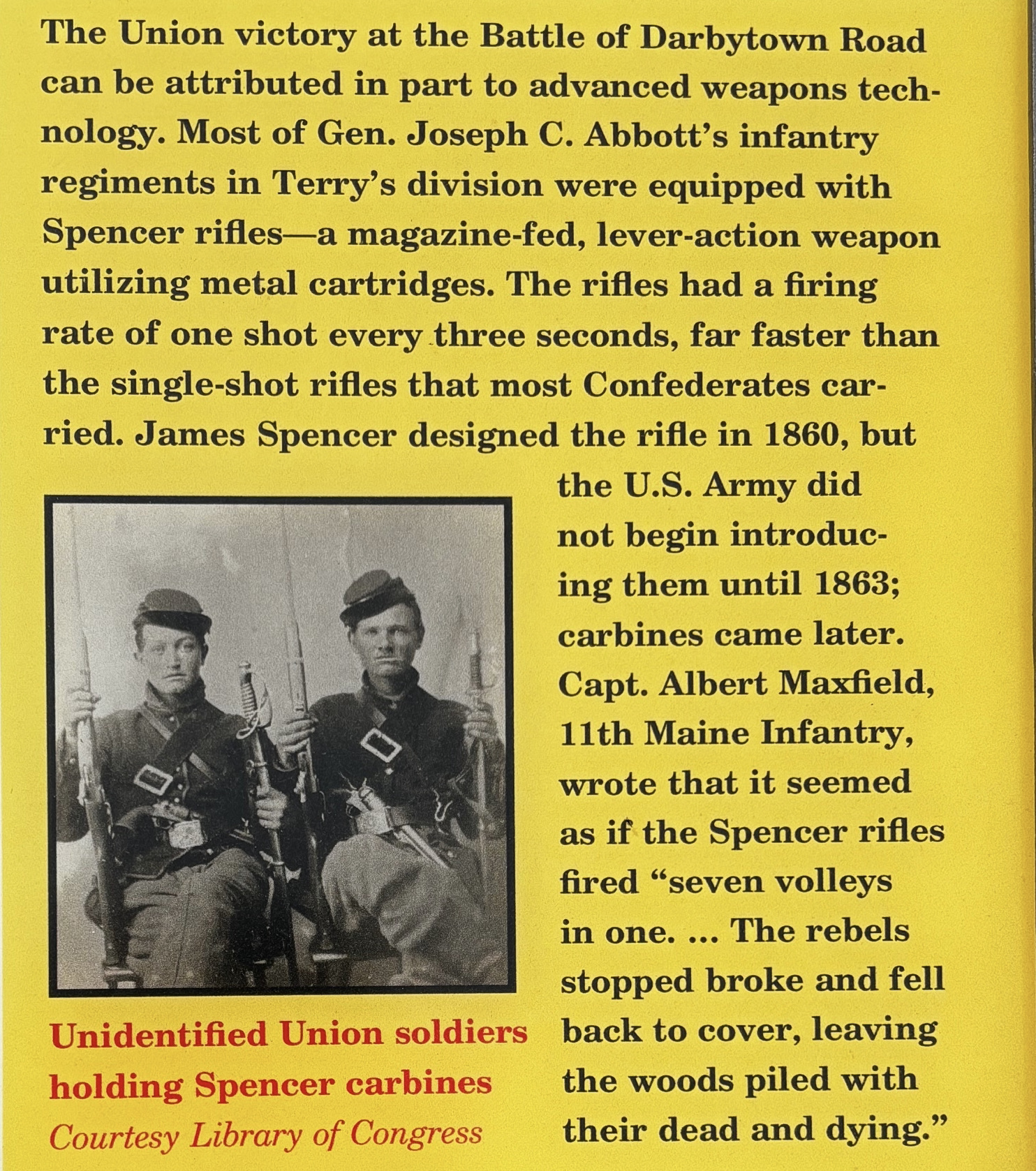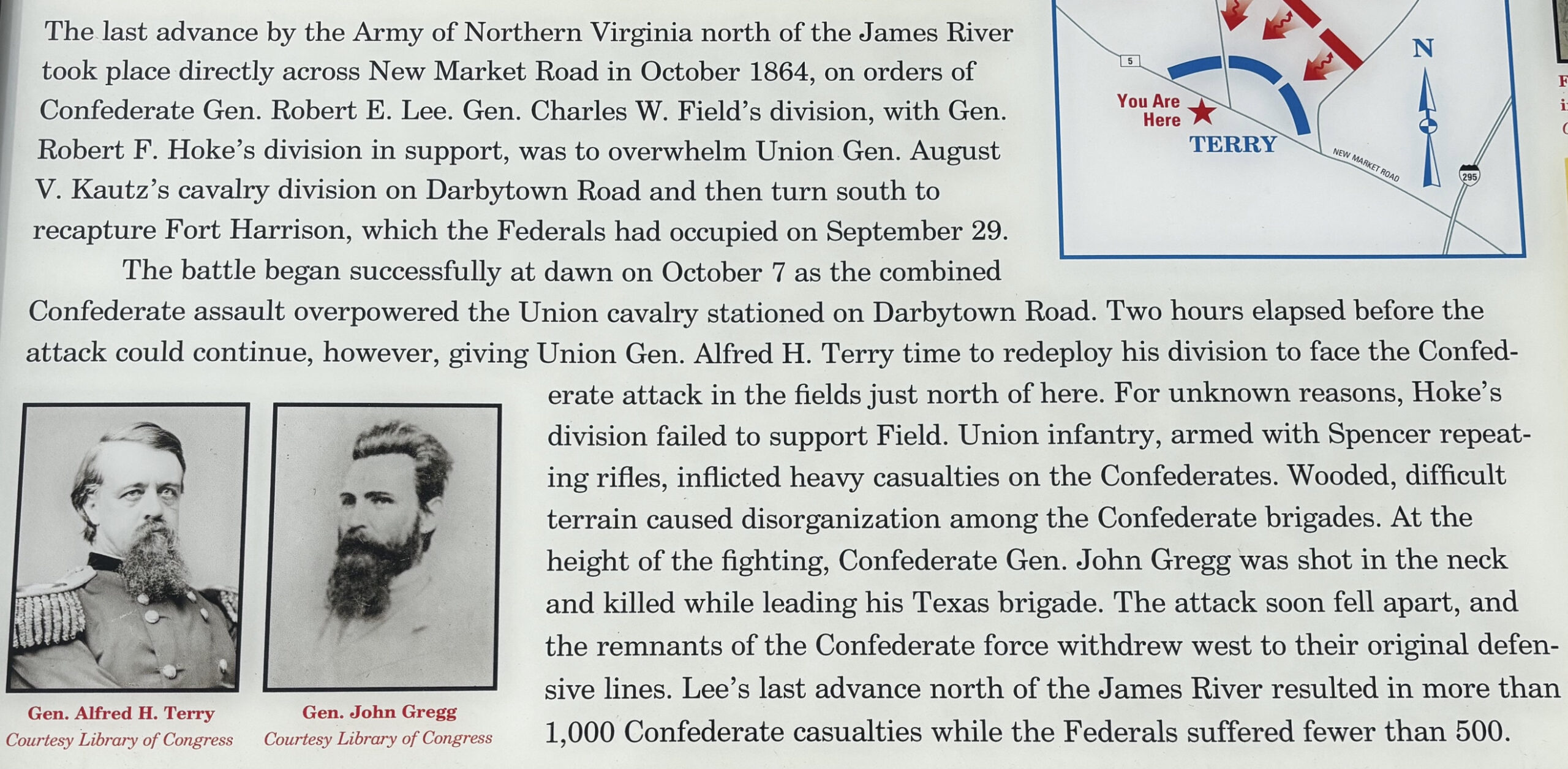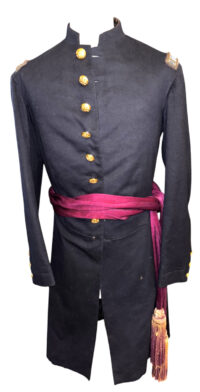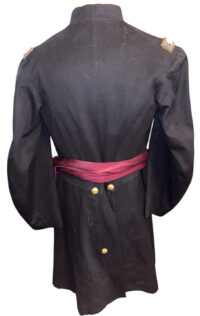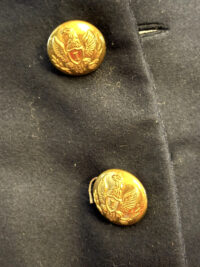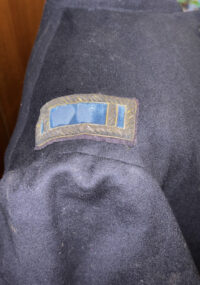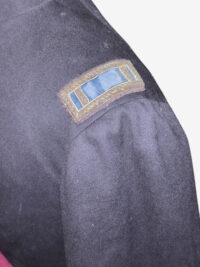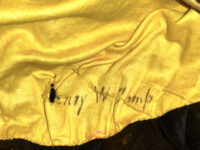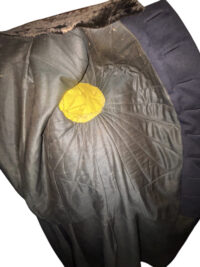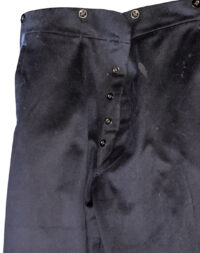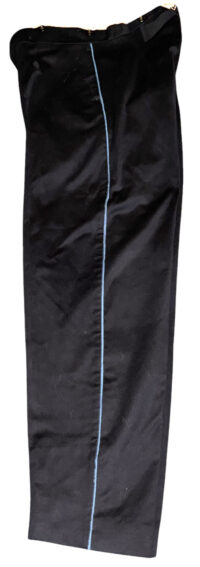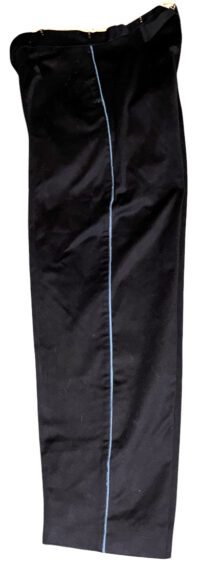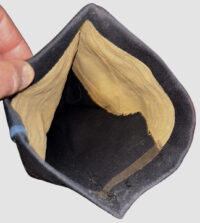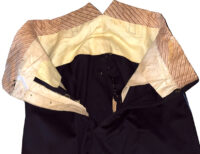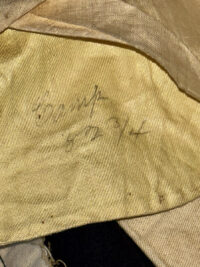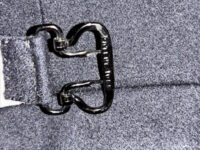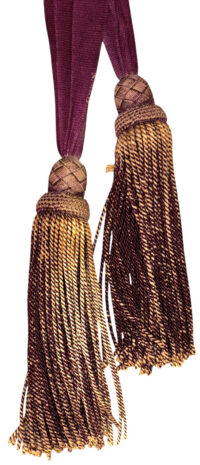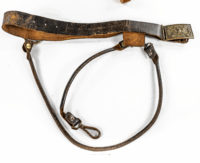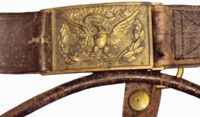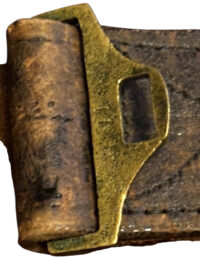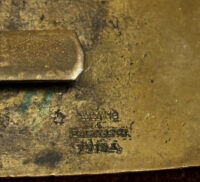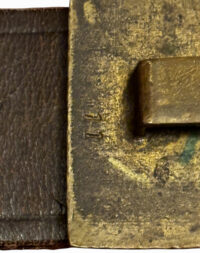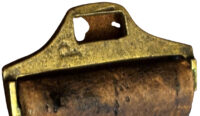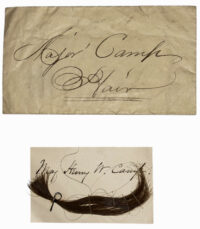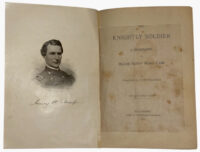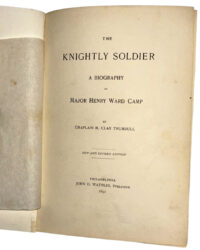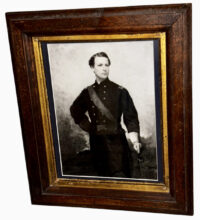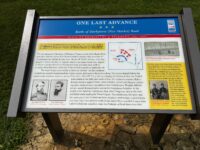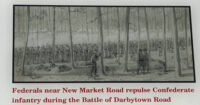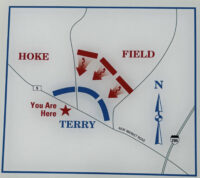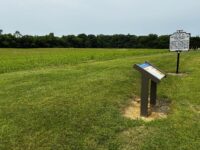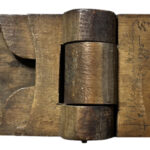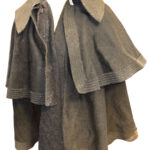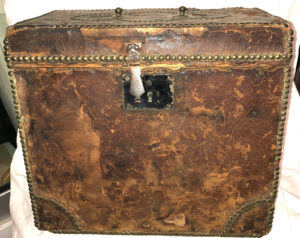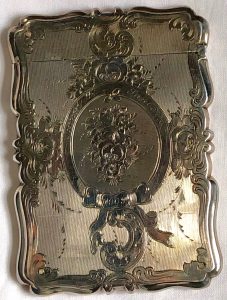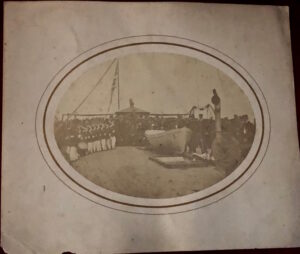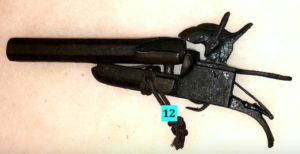Id’d Union Officer’s Frock Coat, Trousers, Sash and Belt – Lieutenant Henry Ward Camp 10th Connecticut Infantry – POW at Battery Wagner Assault and KIA at an Engagement on the Darbytown Road Outside of Richmond on Oct. 13, 1864
$17,500
Id’d Union Officer’s Frock Coat, Trousers, Sash and Belt – Lieutenant Henry Ward Camp 10th Connecticut Infantry – POW at Battery Wagner Assault and KIA at an Engagement on the Darbytown Road Outside of Richmond on Oct. 13, 1864 – This historically significant grouping belonged to Lt. (later Major) Henry Ward Camp (February 3, 1839-October 13, 1864) of the 10th Connecticut Volunteer Infantry. Camp was an1860 graduate of Yale University and enlisted in the 10th CT in November 1861 at the rank of Lieutenant; he would later become a prisoner of war during the courageous attempt, on July 18, 1863, to take Battery Wagner on Morris Island, near Charleston, SC. The 10th was in action there in support of the famed 54th Mass. USCT regiment. Camp was sent to the Confederate military prison, Camp Ogelthorpe and was paroled in April 1864. Camp would rejoin his regiment and be promoted to the rank of Major, in September 1864. Shortly after his promotion, Camp was killed in action, on October 13, 1864 during the Battle of Darbytown Road. Camp was apparently highly respected by his men and his superiors; amongst numerous postwar tributes to Camp, was a book, authored by Camp’s 10th Connecticut comrade, Company Chaplain, H. Clay Trumbull, who was captured on Morris Island with Camp in July, 1864 and sent to Camp Ogelthorpe, as well – Trumbull’s tribute is entitled “The Knightly Soldier” and is included with this grouping. Yale University’s library archives has a collection of his writings and a large oil painting portrait of camp, on display. The grouping includes – 1. Camp’s regulation, 9 button frock coat with 1st Lt. of the infantry, shoulder boards indicating use by Lt. Camp in 1862-1863 – the coat has Camp’s name inked in the right armpit and on a card stitched in right interior, body lining; 2. Camp’s Federal regulation, officer’s trousers, with sky blue, infantry branch of service piping down the outer seam of both pant legs; inked on the interior lining of the trousers is “Camp 32 3/4″; 3. Lt. Camp’s burgundy, silk officer’s sash; 4. Camp’s officer’s belt and buckle with sword straps, featuring a M1851 cast brass, officer’s belt plate with a bench mark “11” matching an “11” on the keeper – additionally, the plate is stamped, on the back, with the rare, maker’s mark: “Evans & Hassell / Philadelphia”; 5. A lock of Camp’s hair affixed to some period, white cardstock by black thread and a 5.5″ x 3” envelope with his name inked on the cover that had contained the lock of hair; 6. A copy of the 1892, 323 page published biography of Camp, “The Knightly Soldier”, written by his comrade in the 10th Connecticut, Chaplain H. Clay Trumbull; 7. A recent copy of Camp’s Yale portrait.
In “The Knightly Soldier”, Chaplain Trumbull provided a detailed account of the death of then Major Camp; Trumbull explains that on October 13, 1864, the 10th Connecticut, under Major Camp, was ordered to assault the Confederate works across Darbytown Road. According to Trumbull: “Major Camp, waving his sword, called out cheerily ‘Come on boys, come on!’, then turned to the color sergeant that he might rally the men on the regimental standard. As he did so, a bullet passed through his lungs, and as he fell on his side, he was pierced yet again and again by the thick coming shot. More than one half of the battalion was lost in the fruitless charge. Camp’s body was left where it fell.” The Confederates followed up the retiring column with a skirmish line and held the field with the dead and wounded still strewn about. Camp’s body was stripped of his sword, pistol, watch, regatta ring, money, papers and outer garments. The next morning, Chaplain Trumbull and Lt. Shreve, bearing a flag of truce, brought a note from Major General Terry to the Confederate commander, requesting the return of Major Camp’s remains. Confederate Captain Semmes, from South Carolina, responded to Gen. Terry’s request by returning Major Camp’s body and expressing his sincere regrets regarding the theft of Camp’s clothing and valuables. Major Camp’s diary was recovered and eventually returned to his family.
Period Uniform Features – Frock Coat: constructed of indigo dyed, English broadcloth
wool; unhemmed skirts; black velvet lined interior collar;
“balloon” elbows; hand-whipped buttonholes; correct, period
Eagle I coat and cuff buttons; correct period 1st Lt. rank
straps; interior body quilted and lined with a dark green
satinette; sleeves lined with a cream-colored cotton; pockets
in the coat tails lined with brown polished cotton; exhibits
hand and treadle machine work.
- Trousers: constructed of indigo dyed, English broadcloth wool; waist lined with white, coarse cotton, back area with a print cotton; exhibits hand and treadle machine work; two slash style pockets; back adjuster belt and clasp – clasp patent dated “1855”; sky blue infantry branch of service
piping down the outer seam of both pant legs; hand-whipped buttonholes; black japanned tin fly and suspender buttons; cuff linings in both pant legs.
Condition – All components of this grouping remain in overall, very good condition; the frock coat exhibits a minimal amount of wear and is missing one front button, which is in an interior pocket. The trousers remain in very good condition, with some minor insect nips along the stripes. The accompanying, 1893 biography of Camp is in good condition with the front board slightly loosened from the spine. The sash remains in overall very good condition.
Henry W. Camp
Residence Hartford, CT.
Enlisted on 11/27/1861 as a 2nd Lieut.
On 8/5/1862, he was commissioned into “I” Co. Connecticut 10th Infantry.
He was Killed on 10/13/1864 at Darbytown Road, VA
He was listed as:
- POW 7/19/1863 Morris Island, SC
- Paroled 4/30/1864 (place not stated)
Promotions:
- 1st Lieut 1/1/1862 (As of Co. D Not Mustered)
- Adjutant 8/5/1862
- Major 9/24/1864
Intra-regimental company transfers
- 1/1/1862 From company I to company D
- 8/5/1862 From company D to Field & Staff
10th CT Infantry
CONNECTICUT TENTH REGIMENT C. V. INFANTRY. (Three Years.) WRITTEN BY BVT. BRIG.-GEN. JOHN L. OTIS, LATE COLONEL OF THE TENTH CONNECTICUT VOLUNTEERS. THE Tenth Regiment of Infantry was recruited late in the summer of 1861, mustered into the United States service September 30th, at Camp Buckingham, Hartford, left there for Annapolis, Md., October 31st, under command of Colonel Charles L. Russell of Derby, and was assigned to the First (General J. G. Foster’s) Brigade of Burnside’s Division. The regiment remained at Annapolis two months, during which it became noted for superior drill and discipline. January 2d it took transports with the Burnside Expedition for North Carolina, remained on shipboard, miserably provided for, over five weeks, then landed February 7th, and on the 8th fought like a regiment of veterans in the battle of Roanoke Island, losing fifty-six killed and wounded–the heaviest loss sustained by any regiment engaged. Colonel Russell was killed, and was succeeded by Colonel Albert W. Drake of Windsor. February 11th the regiment re-embarked and remained on transports over a month longer, landing at Slocum’s Creek March 13th, and after a hard day’s march and a night bivouac in the mud again distinguished itself for steadiness and efficiency under fire on the morning of the 14th, in the battle of Newbern, losing twenty-seven killed and wounded. Colonel Drake died June 5th, and was succeeded by Colonel Ira W. Pettibone of Winsted. The Tenth remained in North Carolina during the summer of 1862, taking part in all the movements of the army. It was sent to Roanoke Island to suppress a mutiny, a battalion was sent to Plymouth to take part in capturing some rebel works on the Roanoke River, and the whole regiment took part in the Trenton and Tarboro’ expeditions, meeting the enemy at Rawle’s Mills, Hamilton, and Williamstown. July 22d all troops in North Carolina were organized into the Ninth Corps, under command of Major-General Burnside. November 15th Colonel Pettibone resigned, and the command of the regiment devolved for a short time upon Lieutenant-Colonel Pardee, and then on Lieutenant-Colonel Robert Leggett. December 14, 1862, during the Goldsboro’ Expedition, there was a very sharp engagement at Kinston, N. C. General French, of the rebel army, occupied the town with about 7,000 men; one of his brigades under Colonel Mallett occupied a strong position on the opposite side of the Neuse River, to defend the approach to the bridge. Several Union regiments had attempted to carry the enemy’s position, but were all repulsed; the Tenth was then sent for from the rear, passing, on its way to the front, one entire brigade and three regiments of another. Arriving in position, it charged the enemy over three regiments lying down in line of battle, drove the enemy from their position, pursued them to the Neuse River, charged and carried the bridge, which was on fire, and, swept by four guns in a tete-du-pont, captured five hundred prisoners, a like number of small arms, and eleven pieces of artillery, with a loss of one hundred and six killed and wounded. From the time the Tenth commenced its charge, not a soldier of any other infantry regiment took part in the engagement. On the 16th the regiment took part in the engagement at Whitehall, and on the 18th that of Goldsboro’. At this time Colonel T. G. Stevenson, Twenty-fourth Massachusetts, commanded the brigade; General Foster, the expedition and the department. December 24th the troops then in North Carolina were, by order of the President, made to constitute the Eighteenth Corps, with Major-General J. G. Foster in command. January 29, 1863, General Foster led a division of his troops (of which Stevenson’s Brigade, including the Tenth, formed a part) to South Carolina, for the purpose of making an attack on Morris Island and Charleston. Foster’s troops were landed on St. Helena Island, where on February 13th Major John L. Otis of Manchester, was commissioned Colonel and assumed command of the regiment. Before leaving the island the regiment established its well-earned reputation of being the best drilled and best disciplined of any troops in the service. While here General Foster, with thirty men from the Tenth, made a complete reconnoissance of Morris Island, and declared it in a condition to be easily captured by a small force. But difficulties with Hunter and his staff, arising from childish jealousies on their part, resulted in Foster’s return to Newbern, leaving Stevenson’s Brigade behind, which was soon after assigned to General O. S. Ferry’s Division of the Tenth Corps. April 9, 1863, the brigade left St. Helena Island for Edisto Inlet, and on the next day the Tenth landed under the guns of Commodore Rogers’s monitor and drove the enemy from Seabrook Island, losing one killed and two wounded. While stationed on this island, the regiment was ordered to make a reconnoissance on John’s Island, out of reach of support from the main body. The enemy had taken up the planking of the bridge connecting the two islands, and had a good force of infantry, artillery, and cavalry stationed so as to prevent relaying it. Colonel Otis, having but a single regiment of infantry with him, retired to a good position and sent back for another regiment of infantry and a section of artillery. Meantime the enemy crossed to Seabrook Island with the hope of capturing the Tenth before re-enforcements could arrive; but they arrived in season and the enemy was attacked with such vigor that they were driven from the island in confusion, pulling up the bridge planking after them. July 14th Stevenson’s Brigade took transports for James Island, landed there on the 16th, and became a part of Terry’s Division, Tenth Corps. On the 17th the enemy drove the Fifty- fourth Massachusetts from its position, where it was holding one of the causeways, and marched five regiments of infantry, a battery, and a squadron of cavalry on to the island, and unwittingly formed their line of battle so that it left the Tenth on their right and rear. As our main line of battle outnumbered them two to one, and faced them at not more than two hundred and fifty yards distant, Colonel Otis begged permission to attack their right and rear while at this disadvantage, but permission was peremptorily refused. The two lines of battle faced each other for a few minutes without a shot being fired, then the enemy faced to the right, marched deliberately past our front, and off over one of the causeways, without molestation. Colonel Otis was ordered to “follow them up closely, but in no case to bring on an action.” This he did, capturing several prisoners. There is no doubt that every rebel soldier who came on to the island would have been killed or captured had an attack been ordered. On the morning of the 18th Terry’s Division marched across Coles Island to a position opposite Folly Island, and after several hours’ delay took transports for Morris Island–the whole brigade arriving just in time to form in the third column of attack on Fort Wagner; but the order to charge was countermanded just as the brigade came under fire. Next morning Chaplain Trumbull and Adjutant Camp, understanding that a truce had been agreed upon, went out among the wounded, and inadvertently getting within the enemy’s lines, were captured and taken to Charleston. Two weeks later Colonel Otis was detailed for special duty, and Lieutenant- Colonel Leggett having been severely wounded, the command of the regiment devolved temporarily upon Major E. S. Greeley of New Haven. Although the regiment suffered but little loss on Morris Island, its service there was arduous and trying. The courage and soldierly qualities of both officers and men were severely tested; they were constantly on duty, and at the front every third day, exposed to the fire of all the rebel fortifications about Charleston. When ordered to St. Augustine, after the capture of Fort Wagner, sixty per cent of the men were on the sick list. In November Colonel Otis was relieved from special duty, resumed command of the regiment, and was placed in command of the Post and District of St. Augustine. While stationed here a force of the enemy’s cavalry, one hundred and sixty strong, ambushed a detail of about thirty-five wood-choppers from the Tenth, commanded by an officer from another regiment; the officer and two men were killed and twenty-one captured. April 18, 1864, the regiment took transports for Virginia, reported at Gloucester Point the 25th, and was assigned to the Third Brigade, Terry’s (First) Division, Tenth Corps, Army of the James. This army was composed of the Tenth Corps under General Gillmore and the Eighteenth under General Smith, the whole under command of General B. F. Butler. On May 7th the regiment took a conspicuous part in the affair at Port Walthall Junction, driving the enemy away from the railroad and destroying the telegraph, while other troops tore up the track. General Plaisted, the brigade commander, who had never before seen the Tenth under fire, expressed astonishment and admiration at its matchless steadiness in action. May 13th, 14th, and 15th the regiment took an active part in all the preliminary movements and skirmishing preceding the battle of Drewry’s Bluff, and on the 16th was conspicuous throughout the day in that engagement. The right flank of the Eighteenth Corps should have rested on the James River, but “through somebody’s blunder,” it did not, and the enemy marched a large force between that flank and the river, capturing two brigades and leaving the right in such condition that the Tenth Corps, which was forcing back the enemy’s right, was ordered to withdraw and send re-enforcements to the Eighteenth Corps. To the Tenth Regiment was assigned the duty of holding the enemy in check while Hawley’s Brigade on its right and Pond’s on the left withdrew from the front: a duty which rendered the regiment liable to be overwhelmed and captured by the heavy force sent against it. Here again it won the applause of many officers of rank who witnessed its conduct in holding the enemy in check until the other troops had gained a safe position, then retiring in perfect order, halting twice to drive back the pursuing forces. The brigade commander said of this affair in his official report: “Of the Tenth Connecticut Volunteers I need hardly say more than that they fully sustained the splendid reputation they have hitherto borne. For steady and soldierly behavior under most trying circumstances …. they may have been equaled but never surpassed. Under a fire in which eighteen fell from the left of the regiment in almost as many seconds, not a man spoke a word or moved a heel from the alignment.” The moment this duty had been accomplished the regiment was sent to the front farther to the right, with orders to hold the enemy in check there until other troops could gain a safe position; this accomplished, Colonel Otis was ordered to take his own and another regiment of infantry, with a section of artillery, advance to the “Half-Way House,” and hold a position there on the Richmond & Petersburg pike until the last of the Eighteenth Corps had passed to the rear. The enemy, with both infantry and artillery, attempted to force the position, but failed completely. The Tenth was then sent far out to the right of our retreating army to protect its flank, and remained there until all had passed to the rear, then became the rear- guard back to Bermuda Hundred. In these movements the regiment lost thirty-six killed and wounded–none missing, although at three different times during the 16th it had been in danger of capture through holding its ground so tenaciously while the corps was retiring. Early in June the regiment took part in repelling the attack of Beauregard on the Bermuda Hundred lines, when Major- General Walker of the rebel army was wounded and captured; Beauregard himself barely escaped. June 15th the Tenth was on duty at the front near Wier Bottom Church, Major Greeley in command. About three in the morning signs of a movement on the part of the enemy were observed. A skirmish line soon demonstrated that the enemy was retiring, on which the main body of the regiment advanced so rapidly as to capture, without loss, the famous Howlett House Battery, with thirty men and two officers. On the evening of June 20th a division under General Terry moved down to Jones’s Landing, on the James River, with orders to cross by a pontoon bridge and capture Deep Bottom, a position north of the James and only nine miles from Richmond. There was so much delay with the pontoons that the General, fearing daylight would reveal and defeat the movement before the bridge could be completed, ordered Colonel Otis to select another infantry regiment in addition to his own, cross the river in boats, and capture the position. The Eleventh Maine was selected in addition to the Tenth, the movement promptly executed; and the position captured at two o’clock in the morning. At daylight the enemy appeared in force with infantry and artillery to retake it, but were promptly repulsed. From this time to the end of the war Deep Bottom was the base of operations against Richmond. A few days later two detachments were sent out from the regiment to go within the enemy’s lines, capture and destroy a gristmill with a large amount of grain, and also capture a torpedo station and bring away the apparatus. Both expeditions were completely successful. August 10th the regiment was on duty at the front. The enemy made determined attacks on the lines, and were repulsed with considerable loss. The Tenth being well protected, lost but one killed and three wounded. The following correspondence between Generals Butler and Foster relative to the affair speaks for itself–no other troops than the Tenth were engaged: HEADQUARTERS THIRD BRIGADE, FIRST DIVISION, TENTH CORPS, ARMY OF THE JAMES, DEEP BOTTOM, VA., August 1, 1864. Colonel J. L. OTIS, Commanding Tenth Connecticut Volunteers: SIR,–I have the honor to forward the following dispatch from Colonel J. W. Shaffer, Chief-of-Staff, in answer to a dispatch in relation to the affair in which your regiment was engaged this afternoon. The dispatch by telegraph from General Butler’s Headquarters, August 1, 1864: General FOSTER: Your dispatch is received. The Commanding General thanks you and your troops for the gallant manner in which you repulsed the attack on your lines this evening. [Signed] J. W. SHAFFER, Colonel and Chief-of-Staff. Very respectfully, your obedient servant, P. A. DAVIS, Capt. and A. A. G. July 26th Colonel Otis was again ordered to take the Tenth Connecticut and Eleventh Maine, cross from Deep Bottom to Strawberry Plain, and retake a position from which a brigade of the Nineteenth Corps had been driven the evening before. The two regiments recovered the position, forced the enemy back into their entrenchments, and held a position within fifty yards of their works through the night. In the morning the two regiments joined a brigade of the Second Corps in charging the works; the Tenth Connecticut and Eleventh Maine carried an angle of the works, capturing three field guns. Loss of the Tenth, nine killed and wounded. August 17th Lieutenant-Colonel Leggett, being too much disabled by wounds received on Morris Island to continue in the field, resigned and was succeeded by Major Greeley. August 26th the regiment fought with its usual gallantry and steadiness in forcing the enemy’s lines in front of Deep Bottom and Spring Hill, losing thirty-six killed and wounded. Two days later, with the Twenty-fourth Massachusetts and One Hundredth New York, all under command of Colonel Otis, it took the advance in moving against the enemy at Deep Gully and Fuzzells Mills, losing thirty-two killed and wounded. In short, the Tenth was in all of the nameless and almost numberless fights and skirmishes of the Army of the James during the summer of 1864. August 28th the regiment was ordered into the lines at Petersburg, where it remained thirty days, and although no serious engagement took place there during the time, it suffered a loss of nineteen killed and wounded, having been under fire night and day the whole time. September 26th the regiment returned to the north bank of the James, and on the 27th took part in the engagement at Chapin’s Farm which resulted in the capture of Fort Harrison and Newmarket Heights. October 1st General Birney found that the enemy was moving in force northward across the front of the Tenth Corps, became alarmed for the safety of a body of troops under General Terry that had been moved so far to the right as to become disconnected from the main body, and ordered the Tenth Regiment to advance without support and attack the marching column of the enemy. The regiment advanced so promptly that it took a force of the enemy’s cavalry by surprise and sent it flying from the field; then advancing rapidly, attacked the main body of the enemy in flank, compelling them to halt and form in line of battle facing the woods from which their cavalry and pickets had been driven. The Tenth, by changing position rapidly in the woods, gave the rebels the impression that they were attacked by a much heavier force, which kept them stationary until Terry’s safety was assured. General Birney personally thanked the regiment for the pluck and coolness it had displayed in attacking and keeping inactive for two hours a force that outnumbered it ten to one. September 30th the three years’ term of the regiment expired. Losses in battle, by disease, and the muster-out of the non-re-enlisted men, reduced the command to but little more than one hundred men present for duty. October 7th, when Kautz’s Cavalry was stampeded without making a fight, and Lee’s army came down to drive the Army of the James back across the river, the regiment on the right of the Tenth broke and ran, leaving the Tenth on the extreme right of the army, where it was attacked by a rebel brigade pushed forward to turn our flank; the regiment stood its ground and drove back the entire brigade in confusion. The enemy rallied and again advanced, and was driven back the second time with heavy loss, leaving their dead, including three regimental commanders, on the field. The loss of the Tenth was eight killed and wounded. General Plaisted said of this affair in his official report: “In my opinion, the conduct of the Tenth Regiment, when the troops on its right broke and fled, saved the Army of the James from disaster.” October 13th the regiment, with but ninety men in the ranks, was ordered to join Pond’s Brigade in charging a heavy and well-manned line of entrenchments on the Darby Road, five miles from Richmond. The force sent in was entirely inadequate and met with a bloody repulse, the Tenth losing forty-six killed and wounded–just one more than half the number taken into the fight. The enemy was not only thoroughly entrenched, but outnumbered the assaulting column five to one. During a service of more than three years, this was the first time the regiment had fallen back under fire. October 18th Colonel Otis was mustered out by reason of “expiration of term of service,” and the command of the regiment devolved upon Colonel E. S. Greeley of New Haven. October 28th, the Tenth, under his command, had a sharp skirmish near the Gerhardt plantation with the loss of five wounded, and near the Johnson Place on the 29th with one wounded. The following week the Tenth was one of the regiments selected to go to New York city and preserve order there during the presidential election. In November and December the regiment was recruited with substitutes up to about eight hundred men. March 28, 1865, Colonel Greeley being absent on leave, the regiment, under command of Lieutenant-Colonel E. D. S. Goodyear, broke camp north of the James, with orders to march to the extreme left of the lines south of Petersburg. It reached Dinwiddie on the evening of the 29th; on the 31st took post at Hatcher’s Run, and the next morning at four o’clock was attacked by a brigade of North Carolina troops, which it whipped handsomely, taking a number of prisoners. April 2d, four companies being on picket, Lieutenant-Colonel Goodyear was ordered to take the other six and join in the assault on Fort Gregg, a key to the inner defenses of Petersburg. After a march of over three hours he joined the assaulting column, which had to advance under the fire of Forts Gregg, Bradley, and Cemetery Hill. The fighting for a foothold on the parapet of the fort was desperate, and continued for more than half an hour with the bayonet and clubbed muskets. The Tenth carried the southern angle of the works, and its State flag, with twenty-three bullet holes through it and three through the staff, was the first banner planted on the parapet. The desperate character of the combat is shown by the losses sustained: out of thirteen officers and one hundred and eighty men of the Tenth that were engaged, eight officers and one hundred and eighteen men were killed or wounded. The corps commander, General Gibbons, presented the regiment a bronze eagle in recognition of its service on the occasion. General Grant himself gave the order for the charge, and in his “Memoirs” speaks in high terms of the conduct of the troops engaged. Lieutenant-Colonel Goodyear was severely wounded in the charge, and the command of the regiment devolved upon Captain Hickerson, under whom it marched in the van of the infantry sent to the support of Sheridan. Lee’s plan was to defeat the cavalry and escape around the flank of the Army of the Potomac. He had already broken through the cavalry when the infantry of the Twenty-fourth Corps, after a march of almost unprecedented hardship, formed across his line of march, barring effectually his further progress. Sabers alone, as Sheridan had foreseen, could not stop Lee’s still strong infantry column, but the bayonets of the Tenth and Eighteenth Corps (the old Army of the James), combined in the new Twenty- fourth, proved an impassable barrier. The rebels advanced on the infantry and some sharp fighting took place, during which the Tenth had several men wounded and seven captured. The prisoners all escaped and got back during the day, but thoroughly cleaned out of everything valuable. The regiment remained at Appomattox until the last rebel had been paroled, leaving there on the 15th of April. On the 16th Colonel Greeley resumed command of the regiment, which moved deliberately “On to Richmond,” where it remained until August 26th, when it was ordered home, and was mustered out of service at Hartford, September 5th–four years, lacking twenty- five days. PRINCIPAL ENGAGEMENTS. Roanoke Island, N. C., Feb. 8, 1862. Newbern, N. C., Mch. 14, 1862. Kinston, N. C., Dec. 14, 1862. Whitehall, N. C., Dec. 16, 1862. Goldsboro, N. C., Dec. 18, 1862. Seabrook Island, S. C., Mch. 28, 1863. Siege of Charleston, S. C., from July 28 to Oct. 25, 1863. St. Augustine, Fla., Dec. 30, 1863. Walthall Junction, Va., May 7, 1864. Drewry’s Bluff, Va., May 13 to 17 (inclusive), 1864. Bermuda Hundred, Va., June 16, 1864. Deep Bottom, Va., June 20, 1864. Strawberry Plains, Va., July 26 and 27, 1864. Deep Bottom, Va., Aug. 1, 1864. Deep Bottom, Va., Aug. 14, 1864. Deep Run, Va., Aug. 16, 1864. Deep Gully and Fuzzells Mills, Va., Aug. 28, 1864. Siege of Petersburg, Va., Aug. 28 to Sep. 29, 1864. Fort Harrison, Va., Sep. 27, 1864. Laurel Hill Church, Va., 0ct. 1, 1864. Newmarket Road, Va., Oct. 7, 1864. Darbytown Road, Va., Oct. 13, 1864. Darbytown Road, Va., Oct. 27, 1864. Johnson’s Plantation, Va., Oct. 29, 1864. Hatcher’s Run, Va., Mch. 29 and 30, and April 1, 1865. Fort Gregg, Va., April 2, 1865. Appomattox Court House, Va., April 9, 1865.
The 10th Connecticut Infantry Regiment participated in the Second Battle of Fort Wagner (July 18, 1863), which was part of the larger campaign to capture Charleston, South Carolina. While not the primary attacking force, the 10th Connecticut played a crucial role in supporting the assault, particularly by providing a diversionary action. The main assault was led by the 54th Massachusetts Infantry Regiment and the 6th Connecticut Infantry, who suffered heavy casualties in their attempt to breach the fort’s defenses
The 10th Connecticut’s primary function was to draw Confederate fire and attention away from the main assault, allowing other units to advance.
The 10th Connecticut provided crucial support to the 54th Massachusetts, a regiment of Black soldiers, during their heroic but ultimately unsuccessful attack on the fort.
The assault on Fort Wagner was a costly affair for the Union forces, with the 10th Connecticut suffering casualties in the process.

